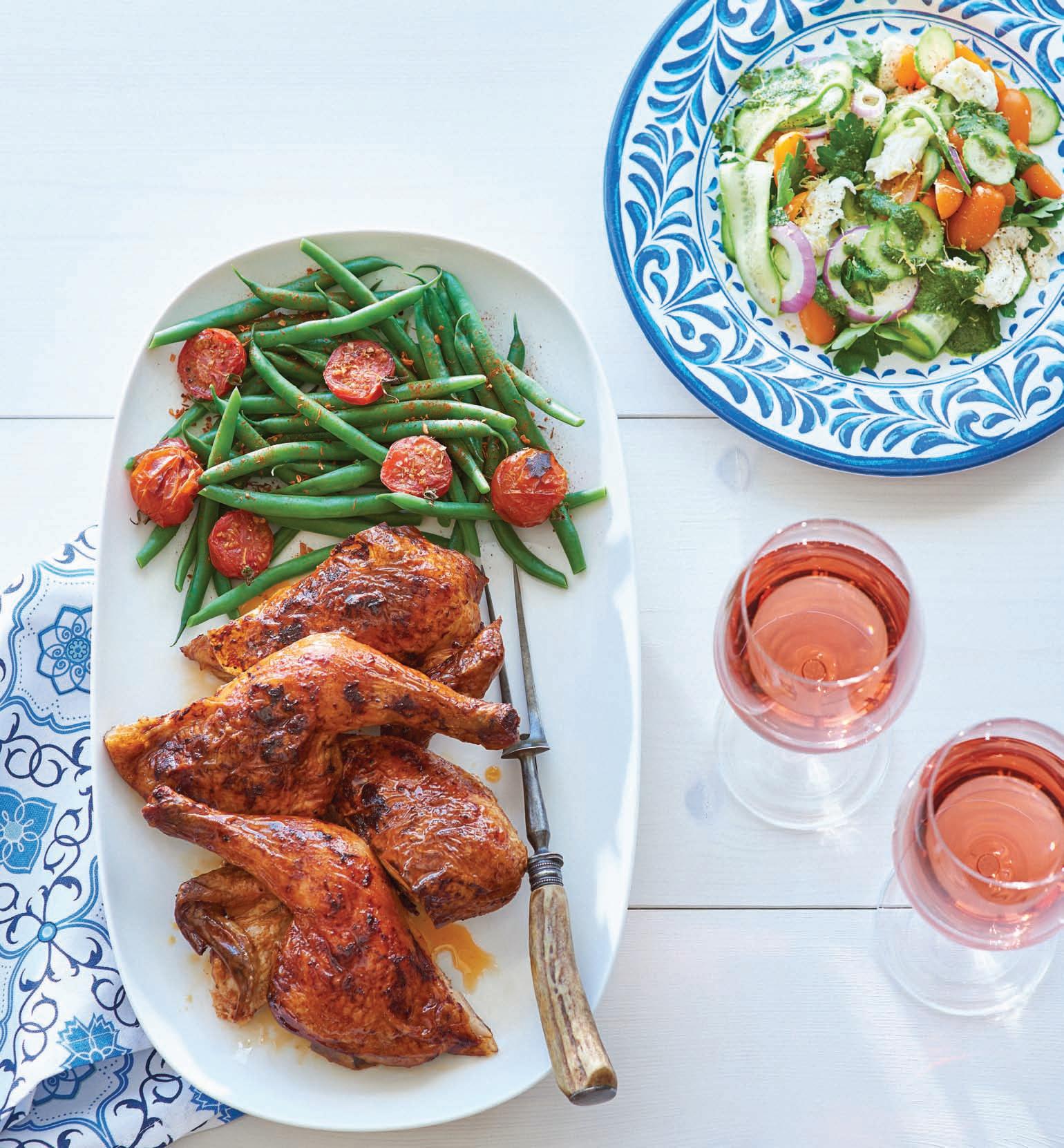




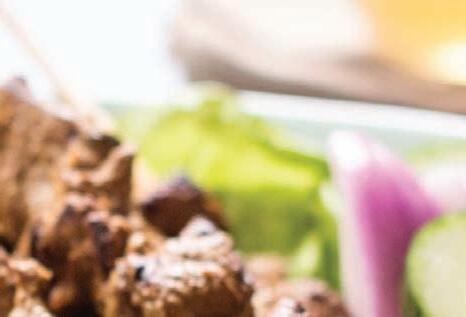

I’m sure there’s no need to tell you that ugly politics has been seeping into every aspect of our lives lately. From Europe to the USA, chaos is gaining the upper hand and events are spinning by at an accelerating speed.
This year, as Canada celebrates its 150th anniversary as a country, it’s worth noting that although we have many problems here at home, Canada still feels like an oasis in the midst of this madness. Please celebrate this milestone in our shared history, and while you do, remember Canada’s indigenous populations who have lived on this land for thousands of years before 1867 and the creation of Canada.
In this issue, check out stories on local ice cream entrepreneurs, the many varieties of salsa, and a bunch of young chefs, who despite the challenges of a tough industry, are finding ways to love it. Plus, we look at restaurant desserts—are they on the decline?
In “My Food is My Home”, we visit a new Victoria family who escaped the turmoil and danger in Syria and found support and a home in our community. The Al Homsi family generously offered their story and a lovely recipe. I hope you read it.
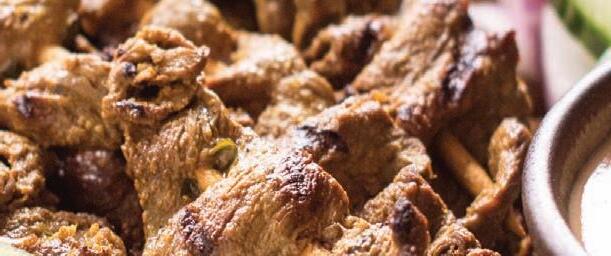
Of course, readers will still have all the usual good stuff, including new restaurants, cocktails, wines and recipes from our talented team. This summer, you can find me out on the patio, slow grilling some piri piri chicken and enjoying a cold, frosty gin and tonic from one of our outstanding BC gin producers. Happy 150 and happy summer!



CORRECTION:




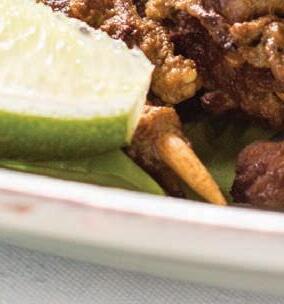

Looking for a different kind of dining experience in the Inner Harbour? Joe’s BBQ Boats is a new venture renting out two grillequipped party boats. Bring your friends and your food and enjoy two hours on the water with a floating BBQ. JOESBBQBOAT.COM


Calgary favourite OEB Breakfast Co. has plans to open two locations in BC later this year. The company has its eyes on a Vancouver location at Main and Broadview and is getting ready to launch a Victoria location. EATOEB.COM
The Cowichan Valley Co-operative Marketplace (CVCM), the Cowichan’s newest farmer and food processor co-operative, is currently seeking recipes from senior contributors (50+) in the community that showcase the region's farm-fresh heritage and feature Cowichan-grown ingredients. Those who would like to submit a recipe are asked to book a short presentation with the CVCM by contacting Heather at info@cow-op.ca. Other opportunities to get involved in the making of the cookbook exist including helping with editing and proofing, photography, and outreach. COW-OP.CA/COOKBOOK


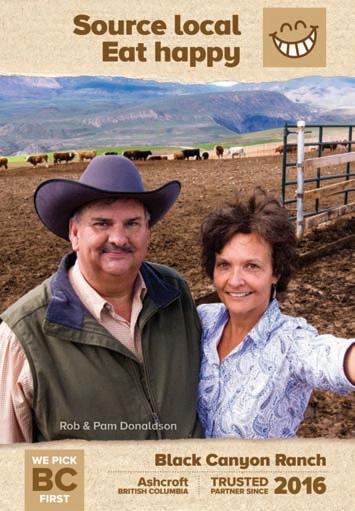
The great minds behind Tacofino and Café Medina are in collaboration with Abdallah El Chami, creator of the beautiful blog The Dallah Menu (thedallahmenu.com), and will be opening Superbaba, a Middle Eastern eatery, in the old Pig location at 1325 Blanshard St. sometime in July. Follow their progress on Facebook @eatsuperbaba
The Little Skewer Bar has opened at 1871 Oak Bay Ave in the space that was previously Confit.
The Oswego Hotel has reimagined their culinary experience and has launched the O Café and Bistro with award-winning chef Brock Windsor at the helm. The breakfast menu will feature house made pastries, homemade granola, fresh fruit, a hot breakfast sandwich and various coffee options supplied by local partner Bows and Arrows Coffee. The O Café also offers a lunch option of a house made soup and sandwich of the day. The O Bistro has undergone an extensive change to the dining menu as well as the beverage menu. The dinner menu is focused on globally inspired small plates focusing on the best local ingredients. The Bistro operates daily from 4 p.m. The Bistro will feature two nights of live music.
OSWEGOHOTELVICTORIA.COM/DINING
Sad news first: if you are scanning this column for info about Taste , Victoria’s popular summer festival of food and wine, then I am sorry to report that it is on hiatus this year. Keep your fingers crossed it’s back next summer.
VICTORIATASTE.COM
A new restaurant has opened at 1108 Blanshard St. Called the Tulip Café and Rice Bar , the menu features a variety of dishes from Australia, Turkey, Germany, Dubai, and Persia. Signature dish is piadinas, a classic Italian street food. “Normally, served with cold cuts. But we thought, why not add Persian spices to these?” And so they did, replacing the cold cuts with healthy grilled beef or chicken, both marinated and seasoned with Middle Eastern flavors, and topped with organic local greens and vegetables, fresh pesto, and a side dish of house made yogurt dip.
EATTULIP.COM
Now some good news: fans of chef Mara Jernigan rejoice! She is back at Fairburn Farm for the summer, hosting a series of six-course Sunday lunches from July 23 to Sept 10. For tickets, contact Mara through her Instagram account @marajernigan.
Hear local musicians on the Breakwater Barge with Victoria's finest truck foods, craft beer from Phillips, Hoyne, Driftwood, Sea Cider , and wine from Artisan Wine Store Mark Anthony every Friday from 5pm-9:30pm until Sept 22. $2 dmission. #beonthebarge
Celebrate the beginning of summer on July 6 at Soirée at the Commons, a oneof-a-kind venue in the heart of downtown Victoria. Listen to music spun by a local DJ and enjoying a gourmet BBQ dinner paired with a custom cocktail or cold glass of local craft beer. Ticket includes appetizers and a gourmet dinner prepared by Food for Thought Catering . Drink tickets will be on sale at the event. 19+ event (minors are not permitted to attend this event). VICTORIACHAMBER.CA/EVENTS
Bannock and Brews in the Harbour promises to be a fun evening on board the Orca Spirit II vessel located in the Inner Harbour. Sip on local craft beer while you learn about local First Nations culture at interactive chef stations featuring seafood chowder, bannock, salmon and other traditional dishes prepared by Songhees Seafood & Steam. Mix and mingle on board vessel while listening to music spun by a local DJ. Ticket includes appetizers and a gourmet dinner. Drink tickets will be on sale at the event. 19+ event (minors are not permitted to attend this event). Please note the vessel will not leave dockside. Tickets from $60. Aug 2
VICTORIACHAMBER.CA/EVENTS
The 25th Galiano Wine & Beer Tasting Festival take place Satuday, August 12 Tickets are still $45.00. Along with your admission this entitles you to 2 souvenir glasses (1 wine and 1 beer) with which to sample all the wine and beer, a delicious

array of free snacks, live entertainment, a silent auction and a chance at a great door prize. To celebrate our event, The Air Canada Foundation has generously donated 2 economy tickets to anywhere in North America, Hawaii, Mexico and other sun destinations (commercial value of $2,250.00) to be raffled at the Festival. A major fundraiser for the Galiano Health Care Centre. GALIANOWINEFESTIVAL.CA
The highly popular Flavour Trails North Saanich Food and Farm Festival, taking place this year from Aug 18-20 , is a celebratory rural ramble and feast of the senses. With dozens of venues and events to explore, there is something for everyone. Take a farm or winery tour, sample food, enjoy music and art, learn about regional indigenous harvesting, watch dog herding demonstrations and experience farm life past and present. Take in the weekend by bike or by car and meet the growers, harvesters, fishers, vintners, chefs and producers that are creating an amazingly rich bounty right here in our own backyard.
FLAVOURTRAILS.COM
Congratulations to EAT writer Cinda Chavich , who won a “Best Food and Drink” feature award from the Travel Media Association of Canada for her Seaweed Season article in the July-August 2016 issue!
ISSUU.COM/GARYHYNES/DOCS/EAT_MAGAZINE_JULY___
AUGUST_2016
FOUNDER & EDITOR
Gary Hynes
PUBLISHER
Pacific Island Gourmet
CONTRIBUTING EDITOR
Carolyn Bateman
VANCOUVER CONTRIBUTING EDITOR
Julie Pegg
SENIOR WINE WRITER
Larry Arnold
PRODUCTION
Gary Hynes
DESIGN CONSULTANT
Aleya Samji
COPYEDITOR
Cynthia Annett
REGIONAL REPORTERS
Tofino Ucluelet, Jen Dart
Victoria, Rebecca Baugniet
Cowichan Valley-Up Island, Kirsten Tyler
CONTRIBUTORS
Larry Arnold
Joseph Blake
Michelle Bouffard
Isabelle Bulota
Cinda Chavich
Jennifer Danter
Pam Durkin
Elizabeth Monk
Daniel Murphy
Daisy Orser
Elizabeth Nyland
Adrian Paradis
André Rozon
Adrien Sala
Shelora Sheldan
Shawn Soole
Benoit Tardif
Jill Van Gyn
Johann Vincent
Rebecca Wellman
COVER
Isabelle Bulota (styling) & André Rozon (photo)
ADVERTISING DIRECTOR
Gary Hynes
SENIOR ACCOUNT MANAGER
Susan Worrall
DIRECTOR OF BUSINESS DEVELOPMENT
Jen Kinna
FACEBOOK/EATMAGAZINE
TWITTER/EATMAGAZINE
INSTAGRAM/EATMAG
For advertising and other inquiries:
PHONE 250.384.9042, EMAIL editor@eatmagazine.ca
ONLINE EatMagazine.ca, TheEatJournal.com
MAILING ADDRESS Box 5225, Victoria, BC, V8R 6N4
STOCKISTS EAT is delivered to over 300 pick-up locations in BC. Visit our website for locations.
PRINTED IN BRITISH COLUMBIA
EAT ® is a registered trademark. Est. 1999


FUN FACT: In Italy the term al fresco usually refers to spending time in jail. Italians usually say fuori or all' aperto when talking about eating outside. In Victoria, of course, al fresco refers to open air dining and warm days and nights. When I think of al fresco dining and seasonal seafood menus, and sweet, salt-tinged, cool air, I think of Blue Crab Seafood House. Frommer's International Guide calls the Blue Crab the "best seafood spot in Victoria."
Overlooking seabirds, seals, seaplanes, sailboats, and little Victoria Harbour Ferries carting tourists and knowing locals on the Pickle Pub Crawl to stops around the Harbour and up the Gorge, the Blue Crab Seafood House has been a fixture for a drink and al fresco nibble for years. Lunch and dinner menus feature salmon, crab, prawn, cod and halibut. If it's in season, it's on the menu.
Blue Crab Seafood House's Executive Chef Gabriel Milne launched his career working for three years at Umberto Menghi's Settebello in the late '90s.
"I worked my way up to sous chef and from there went on to be sous chef of Lucy Brown and eventually, Chef de Cuisine," Milne explains. "After that in 2004, I spent eight years working for critically acclaimed Chef Pino Posteraro at Cippino's, Vancouver's premier Italian restaurant."

Chef Milne moved to Victoria andspent four years as Executive Chef at Canoe Club before becoming Executive Chef at Blue Crab Seafood House last fall. He is responsible for seasonal offerings and daily seafood features from an ever-changing menu that includes large Dungeness and King crab platters, succulent wild prawn po'boy sandwiches, open-faced wild sockeye salmon baguettes, and a choice of cod or halibut fish and chips to name a few of the offerings from the sea.
The large patio with its fireplaces and heaters opened again in May and runs from 11 a.m. to 10 p.m. until the weather runs out on harbourside al fresco dining in the early fall. It's a fabulous view from the patio or inside the restaurant's comfortable, surprisingly quiet ambience. On the edge of the Inner Harbour's busy tourist buzz and featuring nicely-spaced table design and unobtrusive and knowledgeable service, Blue Crab Seafood House is perched just off the lobby of the 10-story Coast Victoria Hotel & Marina by APA. It's a great place for a sumptuous seafood feast or a casual soup and salad lunch. This time of year you can enjoy both al fresco too.
—Joseph Blake
Blue Crab Seafood House
146 Kingston St., Victoria, BC 250-480-1999, bluecrab.ca


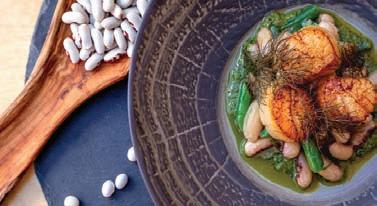
IN APRIL I TRAVELLED TO UMBRIA, specifically to Perugia, for Ercole Olivario, an olive oil competition as fierce as any wine race. Since then I’ve taken to starting my mornings with a thick slice of grilled and olive-oiled baguette topped with fork-mashed cannellini beans instead of my fix of peanut butter and toast. My “breakfast” bruschetta is delicious and satisfying. (I go easy on the garlic if I’m heading to work.)
Most of us are not unfamiliar with bruschetta, but we may be unfamiliar with its pronunciation. In Italy, the “ch” sound in bruschetta is pronounced “k” as in Chianti, not “shhh” as in keep quiet. Locals, like tour guide Danielle Moretti, will not hesitate to correct the gaffe.
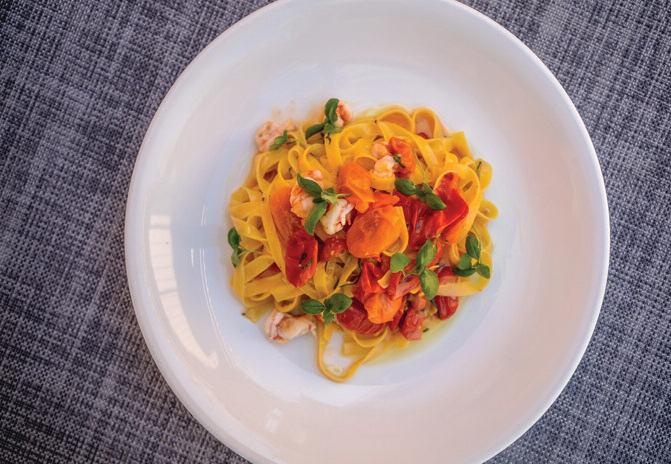
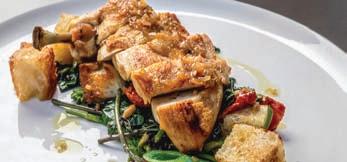
Avocado toast, a current culinary craze, is a type of bruschetta. And traditional tomato-and-mozzarella bruschetta pops up on many a restaurant menu. But none rival the deliciousness of the bruschette (plural) I had abroad. It’s all about the olive oil, you see. Legendary Italian cookbook writer Marcella Hazan calls for grilled panne integrale (whole wheat bread), crushed garlic and enough olive oil—“as green and dense as you can find”—to “soak each slice lightly.”
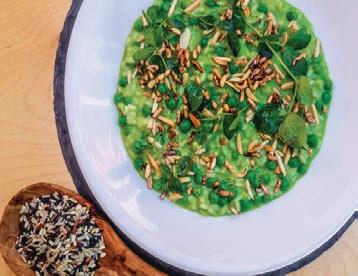
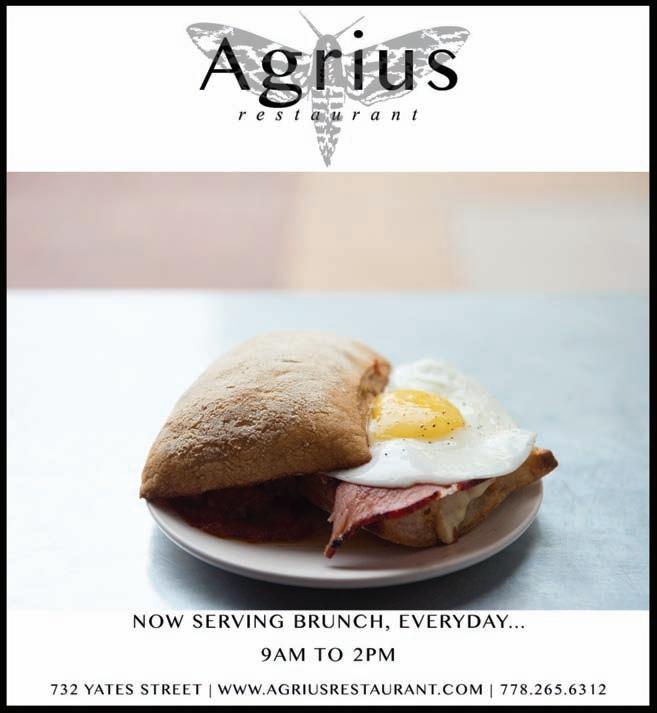
Umbrians are noted for their olives and olive oil, and bruschetta toppings seldom stray from chopped tomatoes, the bread softened with a little of their juices, a scattering of basil leaves or arugula and Parmigiano. I did not come across white bean bruschetta in Italy. That I cribbed from restaurant menus at home. But I follow religiously the Umbrian tenet of not stinting on exceptional olive oil. And I certainly indulge in bruschetta beyond breakfast.
A week or so after the Umbria stop, I am in France. Following the “Discover Rhône” conference, I spend a sunny Sunday strolling along the Rhône River in Côtie-Rôtie, ending up at La Table de César in SaintRomain-en-Gal, just across the bridge from Vienne, sipping rosé and tucking into another take on toast, a
tartine. Tartine (not to be confused with tatin, which means tart) refers to a large, open-faced grilled sandwich and the country bread from which it is made. Sourdough baguette is often the base for toppings, but I prefer a more rustic loaf, which was used on this occasion. Ribbons of roasted courgette and aubergine are layered over a spread of coarsely mashed anchovy and finished with a crumbling of fresh cheese. The tartine, offset by a mound of mixed baby lettuces, is supreme. Each ingredient shines. The sandwich by turns is salty (not fishy), sweet, earthy and tangy. The greens add a lovely lift. Another tartine is decked with slices of warm potato, raw ham and Reblochon, a soft, washed-rind raw cow’s milk cheese. Smoked salmon, wasabi crème fraiche and fresh herbs grace another. Whether these splendid tartines have anything to do with Vienne being so near to Lyon, France’s culinary
mecca, I have no idea. I do know I’ve got to give them a whirl when I am back in Vancouver. I file the smoked salmon tartine under “must replicate with local salmon.”

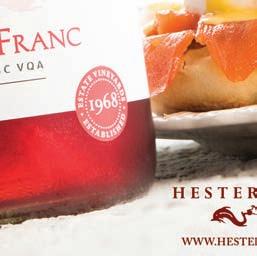




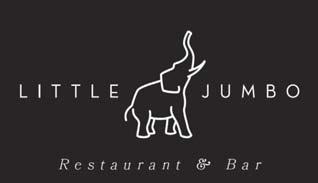
After the Rhône, it’s off to London, where I enjoy toasts and toasties—usually with a strong cuppa or a pint of bitter. My mum was a working mum and I am reminded of the humble toasts my British dad made for me when I came home from school— grilled mushrooms or sardines on buttered rye toast (I loved salty fishes even then). The one I looked forward to best was toasted cheese. Dad would strew a fistful of grated cheddar over bread that was spread thinly with butter and Colman’s mustard, and pop it under the broiler until the cheese bubbled and browned. Toasted cheese remains my go-to quick lunch with a bowl of tomato soup—usually tinned but sometimes homemade. A toastie is merely a grilled cheese sandwich, and these days you can get toasties with add-ins from pulled pork to pesto, the cheese oozing from between thin slices of squished bread.
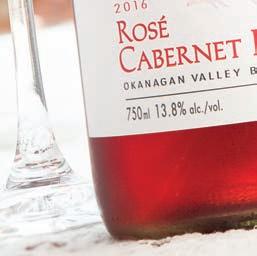
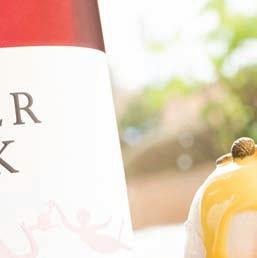



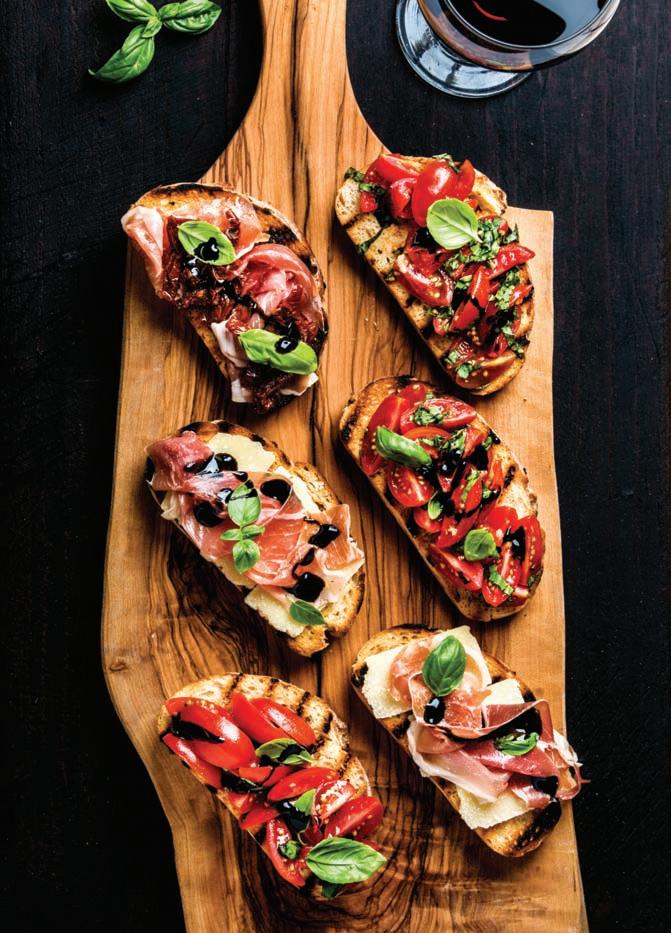
I filed away all these sandwiches in my memory for riffing on this summer. The season’s bounty will gives me permission to play a little fast and loose with ingredients. And the peanut butter may be relegated to the back of the fridge.

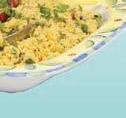








If you consider salsa, ketchup, tomato sauce, spaghetti sauce, tomato paste and raw whole fruit, have you ever gone a week without eating tomatoes?

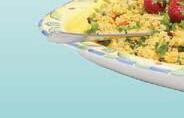




Farmer Tom’s favourite is the beefsteak. I am a sucker for anything heirloom, preferably striped. Whatever your fancy, we are spoiled with tomato options here in Victoria. I recently spent an afternoon with one of our local master tomato growers, Tom Law at Sun Wing Greenhouses, and if I close my eyes I can still smell the warm, tomato-y air. Anyone who knows that heavenly smell of a vine-ripened garden tomato can well imagine the aroma produced by 40,000 square feet of tomato vines. It was glorious.
John Denver sang that there are “only two things that money can’t buy, true love and home-grown tomatoes.” Tom Law grows half a million pounds of pesticide-free, vine-ripened tomatoes annually, harvesting from March to October. All of these tomatoes stay on the Peninsula. I can tell you with a mouth full of tomato that John Denver was stone-cold wrong.
They say there are more than 10,000 tomato varieties. We have access locally to probably 30 and can count ourselves spoiled. We get to live where the humble beefsteak and Roma are in good company with San Marzano, Kumato, Black Zebra and a vast array of heirloom varieties to name a few. Nobody thinks a yellow, orange, brown or green tomato is unusual, in fact they are coveted. Lucky us.
Tomato flowers are “self-fertile,” meaning insects are not required to move pollen from one flower to another. For decades, Sunwing gently shook the pollen of each flower loose by hand so fertilization could occur. Only five years ago, beehives were introduced to the greenhouses to do the work for them. The bumblebees save them a lot of time, and now the greenhouses not only look and smell delicious, they sound beautiful too.
As with most produce, if you keep it simple when it comes to tomato collection and storage, you are safe. Buy in season, grown close to home so they can be ripened on the vine when sugar content is at its peak. If your tomato is ripe, it needs only simple preparation because it should be bursting with flavour. If you have to coax flavour out of your produce, you have selected poorly. I could write an entire column about not putting your tomatoes in the fridge, but if you buy them ripe and eat them right away, the fridge needn’t enter the conversation.
Though greenhouses allow tomato growing to flourish in our rainy, cool climate and provide us with fresh, local, vine-ripened tomatoes for eight months of the year, please keep growing your own. Perhaps what John Denver meant to say was “True love and home-grown tomatoes harvested by your own hand and still warm from the sun.’ Those, indeed, are priceless.
Daisy Orser is co-owner of The Root Cellar Village Green Grocer
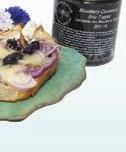

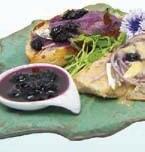


SELECTION: A tomato when harvested ripe has its highest sugar content and flavour profile. Heirloom varieties and those from smaller-scale farms may have some marks or scarring on the flesh. This does not represent poor quality and needn’t be avoided.






STORAGE: Store on your counter out of direct sun. It is the temperature and humidity, not the sunlight, that assists in ripening (if needed). Avoid the fridge at all costs; refrigeration will cause “chilling injury,” resulting in mealiness, uneven ripening and “non-development of aroma compounds” according to the USDA.
TASTE: A never-refrigerated, vine-ripened tomato should be bursting with flavour. The spectrum of varieties available to us will vary in sugar content and acidity.
TREND: Tomatoes aren’t going anywhere, but the unique, open-pollinated, heirloom varieties are currently enjoying the spotlight. Most often served raw in simple salads, complemented by fresh herbs and soft cheeses, these beauties deserve every moment of the spotlight.
SUSTAINABILITY: The diversity of the heirloom tomato is currently thriving and being sustained by an ever-growing increase in the open-pollinated seed collection of these varieties.
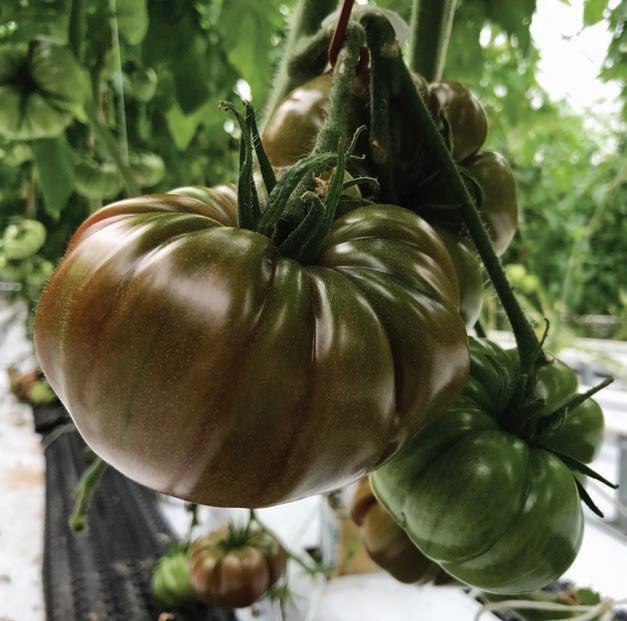
PREPARATION: There is no shortage of delicious things to be done to a tomato, but if ripe, not a lot need be done. Some beautiful olive oil and a pinch of quality sea salt is enough (no disrespect to tomato soup, salsas, spaghetti sauces and all other tomato-based dishes).
TIDBIT: ‘Lycopersicon esculentum’ is the scientific name for the common tomato, which means “edible wolf peach.” The name stems from old German folklore; it was believed that members of the nightshade family, which includes tomatoes, were used by witches to produce werewolves.


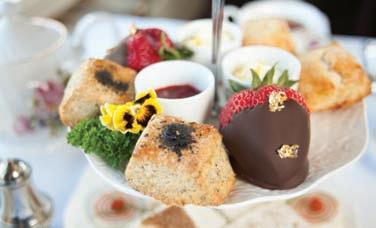


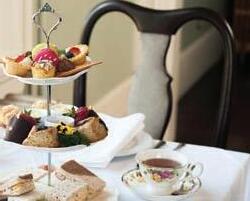






SUMMER IS SYNONYMOUS WITH HOT WEATHER AND OUTDOOR pursuits—two things that can lead to increased thirst or even dehydration. Unfortunately, many of the classic summer drinks we typically guzzle to quench this thirst are laden with health-derailing refined-sugars. This year, why not skip the iced tea and Gatorade and opt for more health-enhancing beverages? A host of new nutritious “plant waters” on the market will keep you well hydrated and provide you with some valuable nutrients. Here are a few of these “plantastic” options.


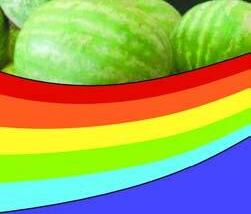


Popular for centuries in tropical countries, this sweet-tasting liquid has now become the go-to health beverage on these shores. Why all the hype? Proponents of coconut water—not to be confused with coconut milk—claim it has anti-aging properties, can lower blood pressure and more. In addition, it’s touted to be the perfect hydration choice after a workout. Is this hype fact or fiction? It’s a little of both. The drink is an excellent source of potassium and does contain trace amounts of other important minerals, in addition to cytokines—plant compounds with proven disease-fighting potential. And yes, coconut water is low in calories (46 per cup) and sugar. Unfortunately, though, there have been no significant studies to back up the rather excessive claims. Regardless, the sweet thirst-quencher is undoubtedly a far healthier choice than sugar-laden sports drinks or sodas.




Don’t confuse maple water with everyone’s favourite syrup. Maple water is the clear maple sap that flows from maple trees when they’re tapped. The liquid has the consistency of regular water and has a slight hint of the maple flavour we all love. It also contains a healthy lineup of vitamins, minerals and antioxidants. What’s more, it has half the calories (a mere 20 per cup) and sugar of coconut water, making it the perfect rehydrator for those watching their sugar intake. Maple water comes “stilled” or slightly carbonated and, like other plant waters, is best served chilled.
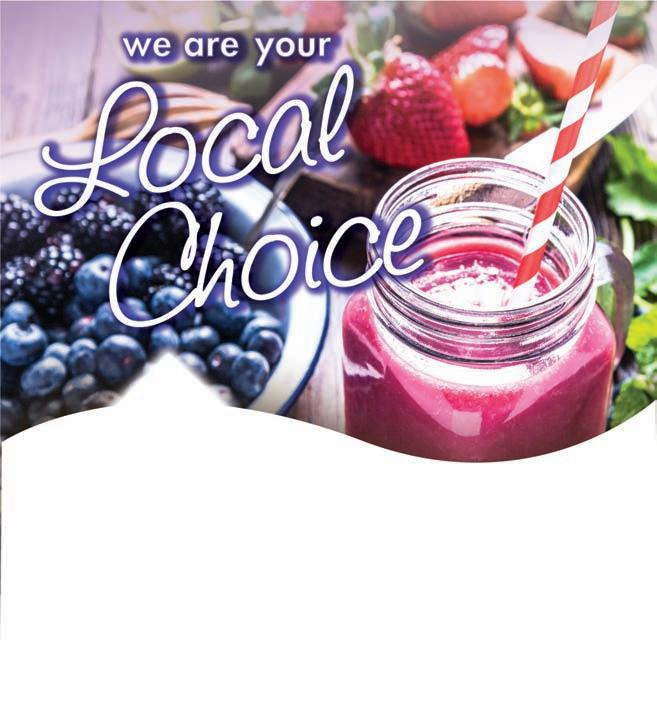
Long considered a health elixir in Eastern Europe, birch water is a relative newcomer to the North American scene. Like maple water, birch water is a low-calorie, low-sugar, tree-derived sap chock-full of vitamins, minerals, electrolytes and antioxidants. It also boasts a lightly sweet, delicate, piney taste that is quite refreshing. It owes its sweetness in large part to xylitol, a naturally occurring sugar alcohol that, according to the American Dental Association, helps fight tooth decay. Another distinguishing feature of the brew is its saponin content. Saponins, a group of phytochemicals found in plants, have been shown to lower cholesterol, kill cancer cells and reduce inflammation. Try this health-enhancing rehydrator chilled and “infused” with sliced berries for a delightful summer swig!

This is the newest plant water on the market and is garnering buzz from nutritionists— and for good reason. The water’s fruity taste is just one of its many unique benefits. Unlike its competitors, cactus-pear water is not sap straight from the tree. It’s an extract of the fruit of the prickly pear cactus, not the cactus itself. Like its brethren, it contains electrolytes and key vitamins and minerals. However, it also boasts betalains—all 24 of them. Betalains are rare antioxidants shown to have anti-cancer, anti-diabetic and anti-inflammatory properties. The water also contains taurine, a health-promoting amino acid that can lower the risk for cardiovascular disease, improve athletic performance and more. All of this renders cactus water the perfect good-for-you summer thirst quencher.
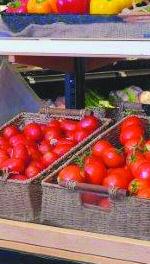
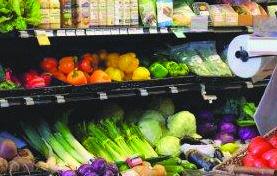




Summer is my favourite season of the year. Longer days, more time with friends and the warm weather make me feel lighter, more relaxed and generally happier. It’s no secret that glorious Vitamin D has a positive impact on our mood, but there are actually deeper nutritional influences that explain why our stress can be more easily reduced in the summer months.
Before the advent of modern technologies such as electricity and the complex food distribution systems that make so many foods available year round, human beings were much more in touch with the energy of the seasons and the rhythm of their bodies. Winter was a time for being indoors, keeping warm, eating a smaller variety of foods, and doing our own version of hibernation. Then, as winter passed, we began to turn our energy outwards again, getting our hands dirty with spring cultivation, opening up once again to the outside world. By the time summer came along, we’d be in the full blossoming of this expansion, shedding weight, spending more time in nature with the long daylight hours, moving our bodies, connecting with those around us and gaining extra energy from food and sunshine. When we re-establish our body’s natural rhythms by getting in touch with eating foods seasonally, our body can reduce stress and get back to equilibrium.
Here are two ways you can use the abundance of summer for healing and stress reduction:
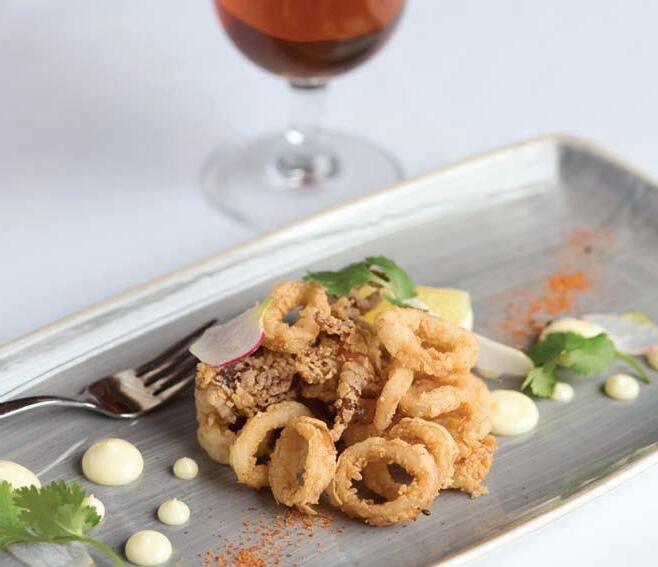

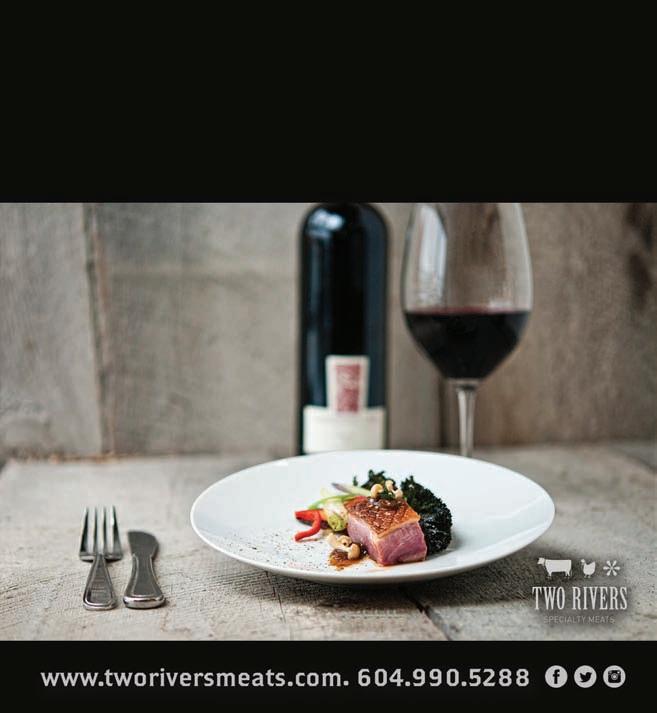
Foods available during the summer months have nutrients that support our bodies in reducing stress, and the Pacific Northwest has such an abundance of summertime food that eating local is easy. Ingredients are fresh and richer in nutrients than those that have travelled hundreds, if not thousands, of miles and a couple weeks to get to your plate. The Ayurvedic tradition refers to this as the prana, or “life force” of the food, meaning the fresher and riper the foods, the more alive the food is and the more nutrient dense it will be.
Summer foods also happen to be high in the nutrients our bodies need to support our adrenal system, the system that manages our stress response. Leafy green vegetables are high in B vitamins, which play a role in central nervous system functioning and the production of adrenal hormones that counteract stress. They also contain magnesium, an anti-stress mineral that helps relax our body and support the parasympathetic nervous system, otherwise known as the “rest and digest” mode. As well, fresh fruits are high in Vitamin C, an antioxidant that protects against free radical damage caused by stress. Wild salmon is freshly available, and is high in anti-inflammatory and mood-supporting omega 3 oils.
Dehydration is common for people who are stressed, but in summer our bodies naturally crave cooling foods with high water contents, such as cucumbers and watermelon. What’s great about these foods is that they also have natural electrolytes, which helps the body absorb the water into our cells so we become hydrated.
Eating fresh and foraged foods and being out of doors in the summer is foundational to reducing stress.
BY KRISTIN PRICE




It’s not only what we put in our bodies; the natural environment also supports us. Camping, hiking or hanging out at the beach is naturally stress-reducing and grounding. Being in nature also means a direct connection with our food source: eating blackberries off the vine, picking wild greens and harvesting foods out of the sea. Foraging reduces stress two ways: by being in nature, and by eating fresh foods rich in the nutrients you need. Allow yourself to have an outdoor experience with your food, and you’ll also be creating a larger environment around you that is stress-reducing as you connect with yourself and with friends.
I encourage you this summer to visit your local farmer’s markets and get curious about new foods such as huckleberries and sea asparagus. Savour the rich flavours of fresh foods and notice how eating and experiencing them affects how you feel. Plan adventures with friends, such as a day hike to pick blackberries and then make blackberry crumble to share over dinner that evening. Or try one of the many foraging workshops available locally that teach you how to identify edible foods in the natural world around you. Here are a couple of places to check out: Natures Chef (natureschef.ca) and Fireweed Farm & School (fireweedschool.com).

Healthy living, including reducing your stress, is not only about what you do, it’s the mental perspective you carry as you're doing it. As you're foraging or picking up the latest summer foods, create fun and presence in what you're experiencing to connect to a deeper grounding in yourself.

Kristin Price's mission is to end suffering from mental health disorders by reinventing our relationship to our thoughts, our food and our planet.



1-1115 NORTH PARK ST., 250-383-5999 FERNWOODCOFFEE.COM
Summer is for patios and people-watching, and it doesn’t get better than at The Parsonage Café/Fernwood Coffee in funky Fernwood. The coveted sidewalk seating in this bustling neighbourhood hub affords diners and coffee sippers a view of a people parade from all walks and stages of life, and if that’s not enough, there’s great window shopping for second-hand clothes at the WIN store on the corner. Customers here have a special relationship with the Flat White on the coffee menu, made from beans roasted right on site. But the food is a draw as well. I normally don’t order sandwiches when I go out to eat, using the classic philosophy of “why order something I can easily make at home?” That theory falls apart in the face of the $9 Parsonage’s Reuben, fat and juicy with smoked brisket from The Whole Beast, melting Swiss cheese and sauerkraut. It is popped on the grill so it gets the toasty texture of a grilled cheese sandwich and served with crisp potato chips they make themselves and slices of pickle. It is my favourite sandwich in town.
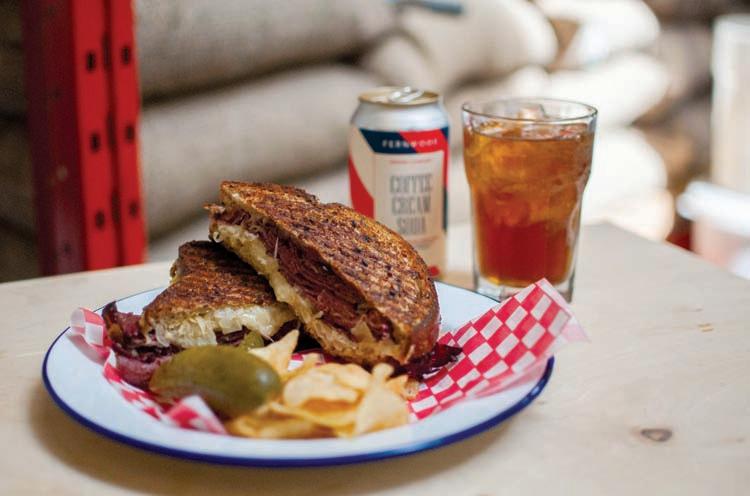
Daily quiche is available for $7, and there’s often a vegetarian option such as the creamy spinach and feta quiche I enjoyed. Gluten-free eaters can usually order one of the soups on the menu, and gluten-free bread from Portofino prevents any cases of Reuben deprivation. The Parsonage is open for breakfast as well, and the Buttermilk Scone, for a very low $3, is a savoury option imbued with sharp cheddar and lots and lots of dill. The Parsonage is a long-time Victoria icon that has been under the current ownership for the past ten years; despite that, something new is brewing. The café has launched a line of coffee sodas, one of which, the Cold Brew Coffee Cream Soda, just won the People’s Choice Award at a competition in Atlanta. Just in time for summer.





2451 ISLAND VIEW RD. AT THE PAT BAY HWY., /HARVEST.RD.FARMTOTABLE


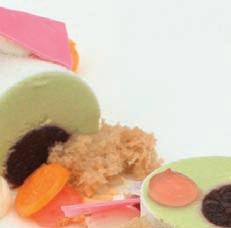
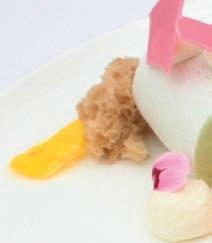

Outdoor seating is easy to find at Harvest Rd. There is, in fact, no other option. You might already go to Michell’s Farms to buy berries and Brussel sprouts. This time, go around the corner, slightly past the store. There you will see an inviting stretch of grass dotted with picnic tables and an equally inviting food truck offering burgers, smoked sausage, a croissant sandwich, salads and a kids’ meal. But this is not just a slap-it-together burger shack. The meats are from Michell and Berryman Farms, all the vegetables are from Michell Farms, and sometimes the eggs are from a neighbour. The all-day breakfast sandwich for $7.75 is very satisfying thanks to its size and flavour. A brioche bun embraces a runny egg, double-smoked bacon or a sausage patty, and melted cheddar, and has a special touch of grated beets and lettuce on it. The toasted Garden Croissant for $9.45 is a good firm structure to hold the juicy contents of chèvre, beets, lettuce and tomato. The Harvest Burger, at $11, is tasty and juicy, yet almost gets upstaged by its sides of chubby, crispy, perfectly salted fries and coleslaw made of red and green cabbage, carrots and a dressing of mint, lime and a hint of habanero.
Always appreciated, the kids’ meal for $6.50 consists of a Berryman Farm hot dog served with a small portion of fries. The beauty of the location cannot be overstated: rolling hills and farmland provide the backdrop, and cyclists wheel by on the adjacent Galloping Goose, or, just as often, pull in for a burger.




All-day breakfast sandwich w/ brioche, egg, double-smoked bacon or a sausage patty, and melted cheddar & grated beets $775 + TAX
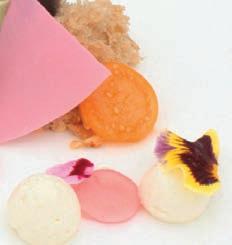
 left: Burger, fries and habanero coleslaw
left: Burger, fries and habanero coleslaw
1715GovernmentStreet
250.475.6260
www.lecole.ca

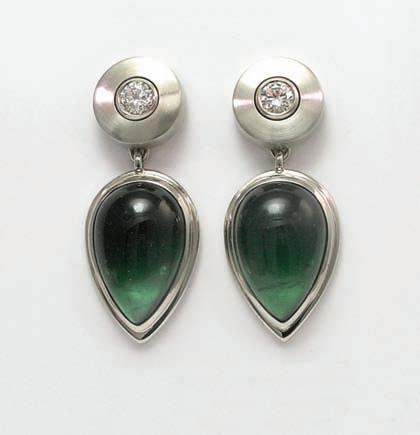
eat@lecole.ca
Dinner5:30-11pm
TuesdaytoSaturday
Roasted Squash and Caramelized Onion Tart
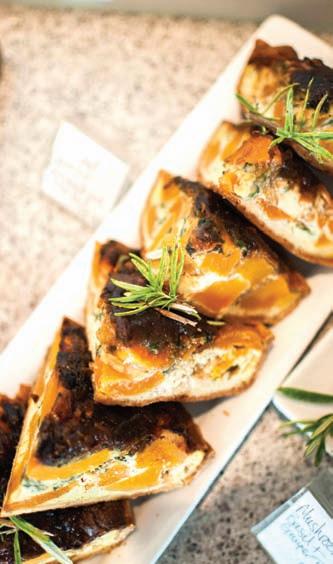
Chef/Owner:

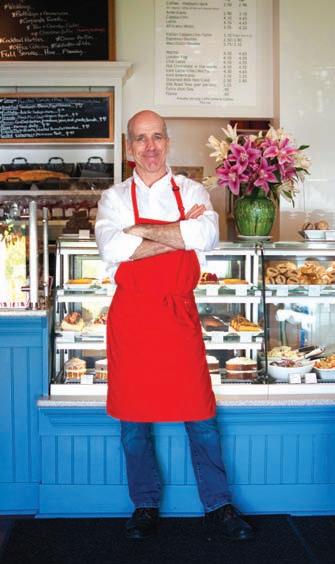
Lunching on the verandah of de’lish on a summer day is a perfect way to enjoy a holiday at home, with a little feeling of Umbria, a little feeling of France, and a lot of feeling of Victoria. Many delicious and elegant mains are under $11. The little piece of France lingering in my memory is the Mushroom, Basil, Gruyère Tart. A caramel brown crust tops a creamy savoury pie with a custardy texture that buoys up the taste of mushroom. Equally delicious is the Roasted Squash and Caramelized Onion Tart, which looks like a sunburst in a pie shell. Chunks of squash retain a firm texture, onions are caramelized into jammy softness, and basil and rosemary provide finishing notes.
Bursting with rich flavours, the pizza includes black olives, caramelized onions, sundried tomatoes, and red and green peppers, with mozzarella cheese
on the bottom and goat cheese on top. Salads change but could include Roasted Brussel Sprout and Squash, a penne pasta salad and a chickpea salad. But it’s hard to eat a healthy salad when the baked goods beckon. The pièce de résistance, which I find myself pondering right this moment, is the Citron Tart: silky, lemony custard encased in a soft, buttery crust and rendered even more beautiful by a sprig of candied lemon peel. The Whole Almond Orange Cake is moist and dense and features a whole simmered orange, pureed and mixed with ground almonds, with the same intriguing hint of bittersweet as a homemade marmalade. These are both $5.95. And for a treat that is very light on the pocketbook, the Macaron ($3.50) is round and rustic-looking, sliced open and spread with dark chocolate ganache. This bustling community café is charming and offers food at a high standard.
August 27, 2017 –
Feast of Fields returns to its inaugural location, Ravenhill Herb Farm to celebrate 20 years of gourmet tasting creations. In traditional fashion, this year’s milestone event will see over 50 of BC’s finest food and beverage providers.
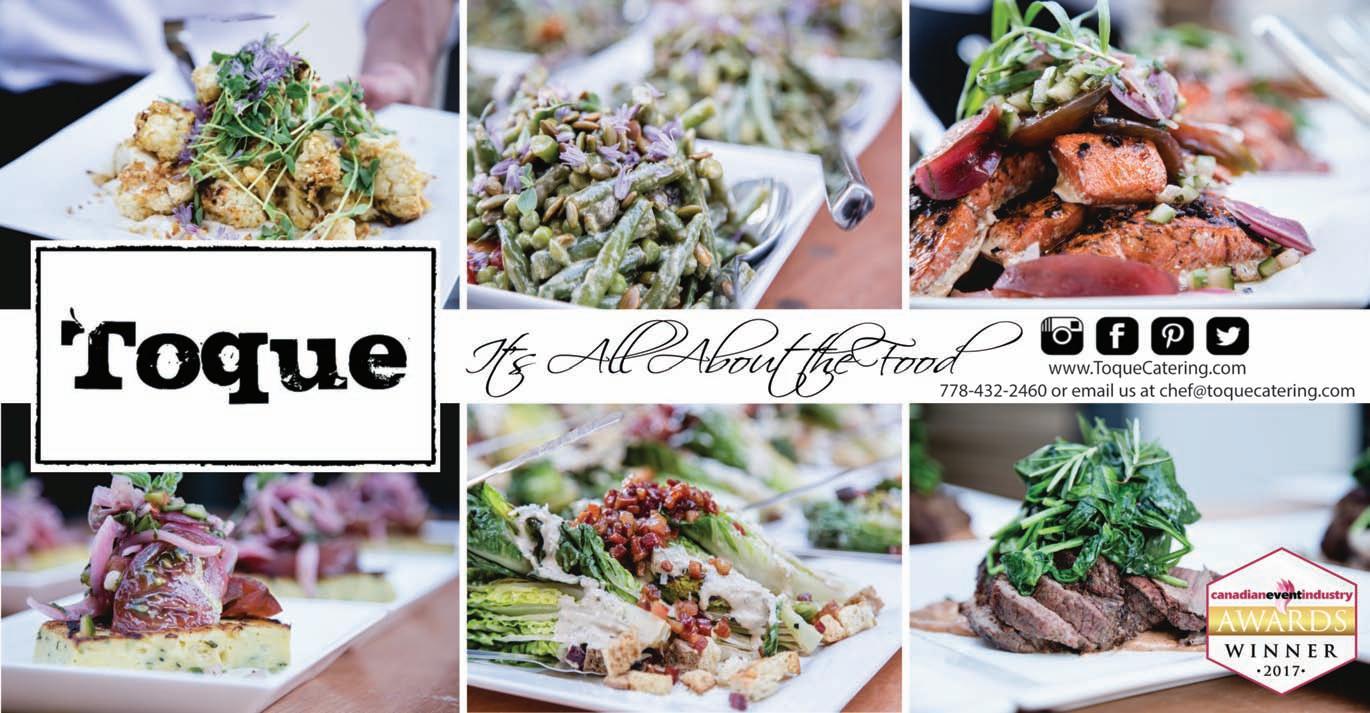
Hosts Brea Segger and Todd Howard, the new stewards of Ravenhill Herb Farm, are proud to welcome back this must-attend culinary event. Ravenhill’s 10-acre farm is rich in history. It was home to the first schoolhouse on the Saanich Peninsula and continues to honor the medicinal and culinary herbal history that the farm has been known for since the 1980’s. The farm raises chickens, goats, and bees, fruits, vegetables and flowers without the use of chemicals, pesticides, or herbicides of any type.
At this year's event, with a wine glass in hand, food lovers can soak in ocean views while mingling in the terraced herb gardens. They can relax in the shade of the century old Douglas and grand firs, listen to live music and bathe in the Mediterranean-like climate.
When Feast of Fields burst onto the scene in 1998 it was the “start of a huge movement,” recalls original Events Coordinator Melanie Banas, “a whole different mindset” was taking place. Founder of Vancouver Island’s Feast of Fields chef Mara Jernigan found a welcome response from the public. “The shift to eating local [food], and to have people visit the farm made that tangible connection to where our food comes from” says Banas, which is exactly what Feast of Fields provides. It’s an opportunity where the “urban dweller gets to meet and talk with chefs, vintners, brewers and bakers. It connects them to their food,” says FarmFolk CityFolk co-founder Herb Barbolet.
“Twenty years ago Feast of Fields was the occasion for people to meet their
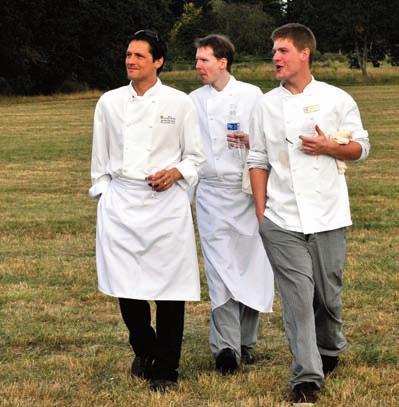
makers,” says current Events Coordinator Jennifer Freeman. Originally, the event began with a mission designed to connect city folks with chefs and farmers. However, over the years it has grown into one of Canada’s greatest local food fundraisers and most sought-after celebrations. Moreover, Feast of Fields remains unique in that it provides a different location every year. “We rotate our locations to highlight the various sub-regions of southern Vancouver Island, to showcase the exceptional farming communities and their special qualities,” says Freeman.
Feast of Fields is Farm Folk City Folk’s largest fundraiser with proceeds supporting sustainable, local food production in British Columbia. “In the past 20 years, the event has raised over $100,000 to be put back into the local food community,” says Freeman.
— BY HOLLY BROOKEWhen: Sunday, August 27, 2017 From 1:00 pm To 4:00 pm
Where: Ravenhill Herb Farm, 1330 Mount Newton Cross Road, Saanichton, BC Price: $95 (Adult) $15 (Youth), (Under 5 Is Free), Bus Ticket: $10-$15 (Round-Trip)
Please Note: No Animals Allowed On Site (Except The Farm Animals Of Course). Please Wear Suitable Footwear And Drive Responsibly.
Long hours, poor pay, challenging working conditions. A younger generation of cooks are walking away from the game. Adrian Paradis spoke to those who are sticking it out and working for change.
 WORDS Adrian Paradis
WORDS Adrian Paradis
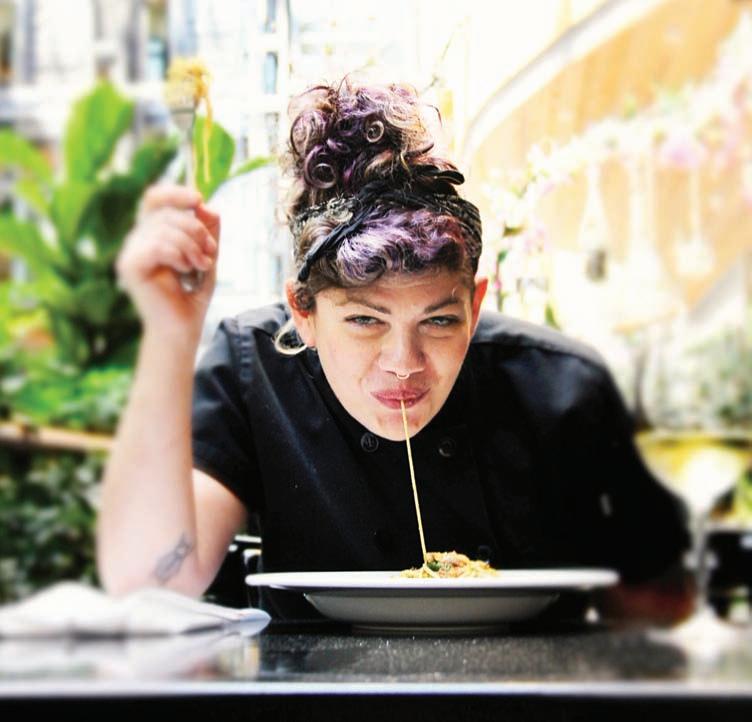



The cooking industry has been in the midst of a troubling paradox for some time. The career path of a cook is largely a job suited for youth: long hours, low pay for entry-level positions and historically abusive working environments. Yet recently, restaurants are being left in the lurch as the youth who previously laboured through these low-level positions are steering towards other career options. Some establishments are barely able to staff their teams as the younger generation of cooks, it seems, are walking away from the game. While the problem is rampant, it is not all-encompassing. For some, cooking is still their career and their passion. The few who have stuck to their guns are not only up-and-coming chefs in the industry, they’re making real strides to reverse the sea of issues presented to new, younger chefs.
Kalpesh Jain completed his hotel management degree in Mumbai with a focus on cooking before he moved to Ottawa to do a culinary management program at Algonquin College. While in Ottawa, he worked at the National Arts Centre under John Morris, now the executive chef at the CN Tower restaurants. Regarding the 10 Acres team, Jain says, “There are lots of young people in our kitchen [most of his staff are in their mid-twenties]. We have a young crew here and people are mostly here to learn. We create our menu together and come up with seasonal ingredients and dishes.
“I think a young crew is necessary, in a way,” continues Jain. “They listen more often and are more adaptive to change.” Commenting on the lack of young people in the industry, Jain says, “You have to take into account the long working hours, less pay and less work-life balance. That’s a factor and I think young people are gravitating towards more lucrative jobs where they have more freedoms. This is more of an art form, rather than a trade. That’s what I feel.”
Laura Belle calls herself “sous chef” but admits she never knows how to define her position. She is the sole employee who works with the two owners. Like so many cooks these days, she says she fell into the position but loves the industry despite its foibles. “When I graduated from University of Toronto,” she says, “I didn’t know what I wanted to do.” Belle majored in criminology but got a job baking as a temporary fix. After about a year, she moved on to work at Cactus Club in Victoria where she stayed for an additional year.
Belle also runs a small catering company focusing on pies called Oh Honey Pies. Her ambition is to one day open a restaurant of her own but says she would rather go back to school for business and learn cooking through an organic method, rather than go through culinary school. “That’s why I’m here at Hank’s,” she says. “Andrew [Mavor] and Clark [Deutscher] are here every day and they really make this place work.”
Belle states emphatically that she loves her job, yet, she doesn’t suggest it for most people. “There are many more creative ways to make a living right now,” she says. “There is a lot of opportunity right now, but you really need to like what you do.” Belle is well aware of the many problems of the industry, including the hyperaggressive and male-dominated environments. Belle says she talked to many chefs around town while looking for a job, stating she could start washing dishes if it meant she had a chance at cooking. “I really wanted someone to give me a shot, and so many chefs said to me, in a kind way, ‘There is a lot of rough language here. I don’t think you would be a good fit for our kitchen.’ I was steered away from so many kitchens because they assumed either I would be uncomfortable or they would be uncomfortable having me there. That was really disappointing.”
Arthur Webb and his wife, Kylie Arnot-Webb, worked for Noodlebox for almost a decade before starting Bao together. After beginning as a dishwasher at the first Noodlebox location (where Bao currently is located on Fisgard), Webb quickly moved up the ranks in the growing company and went on to open up multiple new outlets of the restaurant around Victoria and in Vancouver.
“This location wasn’t making much money, and Noodlebox wanted to walk away from the lease,” says Webb. “We thought we kind of wanted to leave anyways, so we just jumped on the lease before it went on the market. We got to start doing our own thing and get creative again. Being able to work for ourselves is one of the best things we could have done.”
Seeing both sides of the equation, as an employer and a young chef himself, Webb understands the many pitfalls of the industry and has taken steps to alleviate them. “My philosophy opening this place,” he says, “was that we wanted a place where there wasn’t such a difference between the owners and the staff. That’s where there’s a big divide in the industry. A lot of owners aren’t actually working at their locations, but they are still collecting a paycheque. We want our staff to be able to buy a house, if that’s what they want. If more people were to do that, it would make this industry a lot more attractive.”

Julia McInnis went to culinary school in Quebec and worked in Montreal for a few years, including a stint at Au Pied de Cochon, before moving to the island. Despite the many warnings of her employer, Peter Zambri, McInnis says, “I do see myself owning my own restaurant one day. The more time I spend here and watch the way it all works, I don’t see it going any other way.
“Mostly when you are starting out, it is very low pay, especially if you want to work anywhere where you have some kind of creative control. We try to entice people here with creative contribution and access to local organic products.”
She understands the hardships of the industry. “The hours are long and hard. They don’t allow you to have much of a lifestyle. Some people want that work/life balance more. But that is something the industry is shifting to open up more into. As more young people come up into chef positions, that idea of work/life balance is being spread out on the table more.”
Before he completed his Red Seal chef certification in Germany, Ignatz Schuster thought he might like to get into the medical profession. “My dad is a psychiatrist and my brother is a radiologist,” he says. “That medicine path was there and I started to go to university for pharmaceuticals.”
Quickly realizing that he was looking for something more hands-on, Schuster tried his hand at cooking as it had been one of his interests since childhood. After completing his apprenticeship, Schuster travelled around for some time doing stints and gaining diverse experience before he found himself in Canada. “My friend worked at what was Chandlers Seafood Restaurant [now The Guild],” he says. “I didn’t have a lot of experience working with seafood. In Germany, it was more of a mid-countryside setting. There were a lot more birds and game.”
Today, Schuster is aware of the shortage of cooks at the Empress restaurant where he works. When he was completing his apprenticeship almost 10 years ago, “it was very different.
There were only one or two spots available for apprentices, and a lot of applicants for them. I was very lucky to get what I did. Nowadays, it’s all turned around. “There was a hype around the food network explosion,” he continues, “and celebrity chefs were left, right and centre. That hype has flattened out. People realize that the job is not just creativity and teamwork and working unsupervised. It’s also working late, split shifts and working when everyone else is off. I don’t remember my last Christmas off.”

Despite the apparent gloomy outlook, none believe we are in the final days of the food industry.
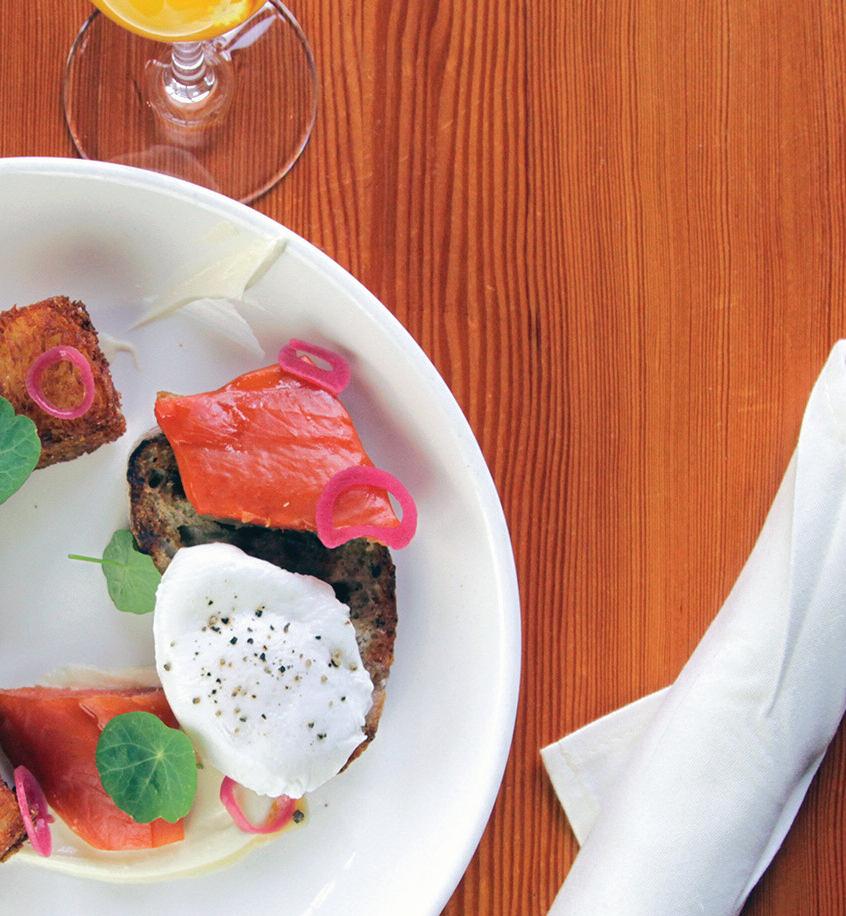
As long as people are eating food, they will be willing to pay money for someone else to cook it. So what we are witnessing is not an end, but a new age for the industry. More than once in conversation with young chefs, the image of the Gordon Ramsaytype abusive chef came up as an analogy for the old ways. Young people are no longer willing to put up with degenerative working situations for little pay. It’s almost certain there will always be a food industry, and always a new generation to change it. The industry is already beginning to change, if only because it has to.
featuring










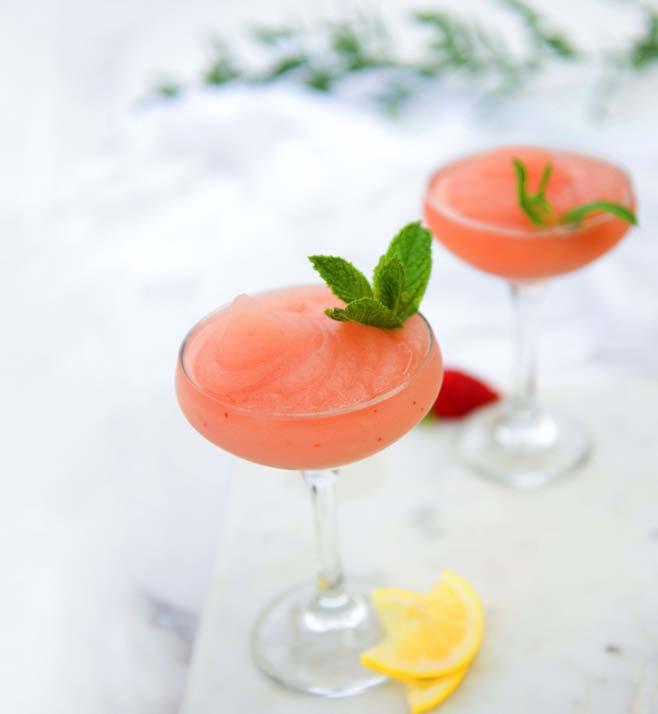
F R O S É
batches from local, sometimes eccentric ingredients.

The icy sweet treat we all love is even better when made by artisans in smallDANIEL EDLER OF 49 BELOW WITH CHOCOLATE, BLUEBERRY AND STRAWBERRY MARSHMALLOW ICE CREAM.
imberley Vy is a pastry chef with a particular penchant for icy treats. Every item on her menu at the Inn at Laurel Point’s Aura restaurant is served with one of her own, house-made ice creams or sorbets, designed to lift, contrast or balance whatever dessert is at the centre of the plate.
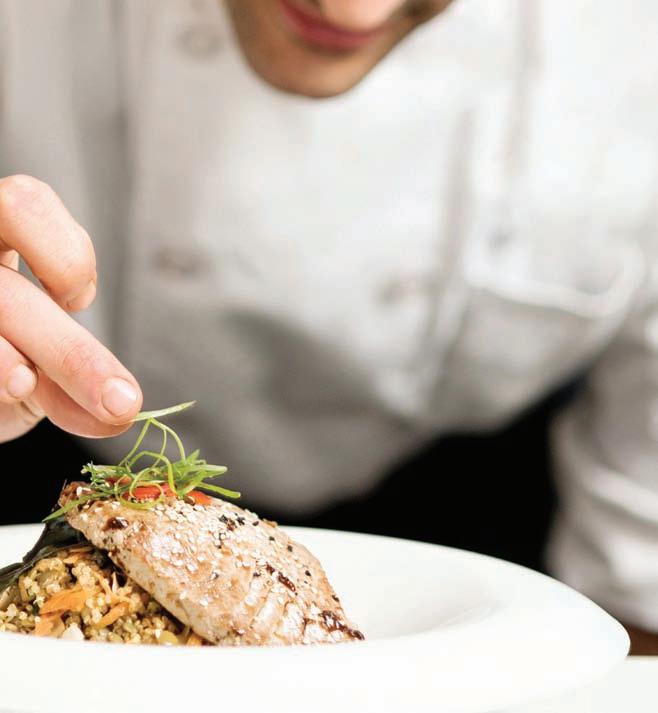
“I’m a huge fan of ice cream—it’s the place I can be really creative,” says Vy as we dig into her chocolate brownie, artfully presented with sweet bruléed banana, malted milk chocolate chantilly cream, and a perfect quenelle of bourbon molasses ice cream. With candied cocoa nibs for crunch, it takes a family favourite into serious gourmet territory.
gelato or big snowy balls of Korean shaved ice topped with mangoes, there’s truth to the adage that “we all scream for ice cream.”
And we seem to be screaming for more— more whacky flavours, more ice cream cakes and cookies, more crazy toppings, more unusual ways to enjoy frozen treats, whether on a stick, in a cone, even wrapped in a sweet “tortilla.”

Small-batch, artisan ice cream is the latest trend, with notable scoop shops like Portland’s Salt & Straw or Vancouver’s Earnest Ice Cream leading the pack. Asian concepts, like the globally inspired shaved ice at Richmond’s Snowy Village Dessert Café, are finding many new fans.
Here in Victoria, artisan ice cream and gelato makers are also pushing the boundaries of what frozen desserts can be. Like
Vy is a bit of an ice cream savant, always riffing on new flavours. It was “baklava ice cream” when we last spoke, pistachio and honey ice cream with a hint of rosewater and phyllo pastry crisped with cocoa butter. Her “Grahamtello” combination included her own graham crackers folded into marshmallow ice cream with frozen bits of Nutella.
“With ice cream, sometimes I’ll add textures, other times it’s just a bright bold flavour—like Thai tea mousse with lemon mascarpone ice cream and an almond corn flake crunch,” she says.
While ice cream is part of the palette for Vy’s beautiful desserts, it’s also the perfect comfort food on its own. Frozen treats cross eras and cultures, equally loved by grandparents and kids around the world. Whether it’s a soft serve cone, a silky Italian
craft breweries, small distilleries and artisan bakeries, it’s a new place for smallscale producers to flex their creative muscles.
In researching this story, I tasted some memorable flavour bombs. I loved the Lemon Meringue ice cream and bittersweet Grapefruit Aperol “Popsicle” at Kid Sister, and the rich vanilla ice cream swirled with bits of home baking (think gingerbread cookies or rhubarb crumble) scooped at Parachute Ice Cream. The silky hazelnut gelato at Ottavio is our new house standard.
Most of these makers have scoop shops and sell their frozen treats by the pint or tub. Some have their own niche specialties, like ice cream sandwiches, ice cream cakes and ice cream delivery services. You’ll find homemade cones and dozens of everchanging flavours—from favourites like



“ Here in Victoria, artisan ice cream and gelato makers are also pushing the boundaries of what frozen desserts can be. Like craft breweries, small distilleries and artisan bakeries, it’s a new place for small-scale producers to flex their creative muscles.”
salted caramel and mint chocolate chunk to ice creams made with local beer or water buffalo milk.
Three skilled local gelato makers—at Mosi, Ottavio and The Italian Bakery—all trace their gelato gene to the same grandfather and his gelateria in Turin, Italy. And many new ice cream makers are inspired by the unconventional Autumn Maxwell and her quirky creations at Cold Comfort. There’s a creamy frozen treat for everyone, whether you’re lactose-intolerant, vegan or a full-on hedonist. It’s hard to keep up with all of the ice cream and gelato makers in the city, and their latest flavour whims, but here’s the scoop on some of my favourite finds:
When Alberto Pozzolo’s parents, aunt and uncle, opened The Italian Bakery in 1978, he was just a kid. Recently arrived from Italy, the families introduced the city to rustic Italian breads, pastries and espresso. Alberto added authentic gelato to the mix nearly 20 years ago, perfecting his recipe with trips back to Turin, where his grandfather had a bar/pasticceria and made gelato in the 1920s. The gelato here is traditional, made from scratch, with natural, premium ingredients imported from Italy or locally sourced. The case holds 18 distinctive flavours, from Amarena cherry or chocolate to coconut or blackberry. Have it here in a cone or a cup (the traditional way) or take out in an
With a new location in Fan Tan Alley in Chinatown, Kid Sister is primed for the downtown tourist trade and has a lot of tasty choices for strolling. Owner Brett Black and his wife Colleen Rode started with paletas, Mexican fruit-based frozen popsicles, back in 2011. They now make artisan ice cream and gelato in many creative flavours (such as goat cheese lime with roasted strawberries or house-made cream cheese and chocolate), but Salted Caramel is the #1 seller. They also specialize in stuff on a stick—try the Roasted Rhubarb Creamsicle—and make sundaes and milkshakes. Ingredients are local, green and organic, featuring organic dairy products from Avalon Dairy, organic eggs and seasonal fruits from their own urban farm. Products are zero-waste, with natural, plant-based packaging. And Kid Sister makes everything from scratch, from their own cones to their cream cheese. Look for late-night weekend openings this summer with new composed ice cream desserts.
kidsistericecream.com

insulated container. Try the 100 percent pistachio—it’s a fan favourite. italianbakeryvictoria.com





Monica Pozzolo and Andrew Moyer run Ottavio Bakery & Delicatessen, a place for artisan baked goods, imported cheeses and, of course, Italian gelato. There’s an Italian Bakery connection here, too— Monica’s parents are founders—and you’ll see vintage photos of her grandfather and the original La Piana pastry shop in Piemonte that fuelled the local legacy displayed in the Oak Bay café. The gelato here starts with whole milk and local fruit purees. An employee is tasked with blitzing and freezing packages of rhubarb, blackberries, loganberries, tayberries, apples and lemons in season, while the nut paste for the silky hazelnut gelato is imported from Italy. Have a cone, buy an insulated container for takeout, or just sit on the patio with a little metal bowl and a tiny spoon and enjoy a scoop in the afternoon. I love the Marsala-spiked zabaglione alongside fresh summer strawberries.
ottaviovictoria.com

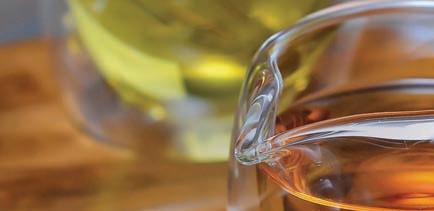

“ There’s a creamy frozen treat for everyone, whether you’re lactose-intolerant, vegan or a full-on hedonist. It’s hard to keep up with all of the ice cream and gelato makers in the city...”
For stay-at-home dad Daniel Edler, making ice cream, and delivering it to your door, offers both an income and a flexible, father-friendly schedule. Edler’s ice cream is the definition of “small batch”—literally made to order, from scratch, with no artificial flavours or fillers, and local, sustainable ingredients. 49 Below Ice Cream has no storefront or scoop shop. Customers subscribe to the Ice Cream of the Month Club for $25 ($299 per year) to receive their two monthly flavours, an ever-changing lineup, from Vietnamese Coffee to Toasted Black Sesame, Rocky Road or Cinnamon Brittle Crunch. Edler relies on his former skills as a database guy to efficiently organize and schedule his weekly deliveries with his 180+ roster of customers. Look for his ice cream at Fig Deli, Fairfield Branch, The Savoury Café and other small retailers soon. 49below.ca
Robyn Laroque and Kevin Fung are the business partners behind Parachute Ice Cream. Laroque started by making ice cream to accompany the pies she makes at Victoria Pie Co., and the idea just grew. Now their ice cream production and small scoop shop is on the industrial strip on Bridge Street, close to some of the craft breweries that also have been featured in her ever-changing stable of creative flavours. Most of Laroque’s ice cream starts with local milk, cream and eggs, but she also makes vegan ice cream with coconut milk as well as seasonal buffalo milk ice cream using milk from the grassfed water buffalo at McClintock Farm in Comox. Because they’re always baking, you’ll find lots of delicious additions to the ice cream at Parachute, from chunks of gingerbread to apple pie, buttery pound cake and rhubarb crumble. Get it in their home-baked waffle cones or by the pintsized refillable jar. The plan is to expand with a line of six popular flavours to wholesalers and retailers, restaurants and other scoop shops, custom products and ice cream cakes.
parachuteicecream.com

Stephano Mosi—cousin to Monica and Alberto Pozzolo—also has gelato in his genes. Both his father and grandfather were bakers in Italy. He owned La Collina Bakery for a decade before moving to Maui and opening a chain of Ono Gelato shops with his wife, Melissa, then returned to Victoria and opened his Mosi Bakery, Café & Gelateria. Mosi grew up eating gelato in Italy but honed his artisanal recipes after attending gelato school in Calabria. In summer his fruits come from the farms surrounding his café on West Saanich Road, from raspberries and blackberries to cherries. He even makes a gelato with blueberry cider from Tod Creek Craft Cider down the road. Look in his vintage Italian gelato case for traditional Piemonte-inspired Gianduja (chocolate hazelnut) gelato and creative flavours that incorporate his brownies, cookies and other tasty baking. He makes sorbet and gelato cakes, too.
mosibakery.com



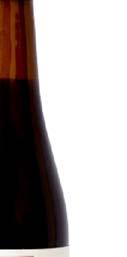
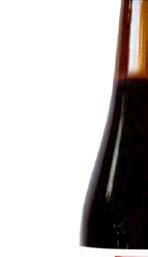
Autumn Maxwell started making ice cream six years ago, one pint at a time, and serving it at the late great Devour restaurant. Now she has a popular scoop shop in Fernwood and an archive of more than 400 unique flavours. She dips into that archive from time to time, or you can pay $25 and she’ll create a custom flavour and deliver it to your door. Unconventional (she offers no cones, but you can bring your own), Maxwell’s specialty is her ice cream sandwiches, both full-sized and minis, hand-wrapped and looking like macarons on steroids in their almond dacquoise shells. She offers dairy-free, gluten-free and vegan products, too, but her standard ice cream mixture is an egg/cream/milk custard base made with organic milk and cream from Avalon Dairy, organic eggs, organic cane sugar and local fruits. Expect the unusual, such as Strawberry Rhubarb Pie, Breakfast (maple syrup, caramelized bacon and pancake bits), Gin and Tonic and popular Hoyne’s Dark Matter Beer or Sea Salt & Caramel.
coldcomfort.ca

MEMORIES, TRADITIONS, FLAVOURS, AND SMELLS. This is what I think of when I think of home. There is a reason we get a deep pang of longing when we catch a whiff of something that reminds us of home. It’s the reason why one of the best compliments a chef can get is “it tastes just like my mother’s cooking,” why we try to recreate childhood dishes at home, and why we return to family favourites over and over. It’s a connection. To exist in a place doesn’t necessarily mean we are truly connected to that place. To discover that connection we often return to food to provide us with both comfort and familiarity.
In 2011, the Arab Spring was sweeping across the Middle East. Like many of these uprisings, a single matchstick event sparked the protracted conflict that is ravaging Syria to this day. On February 16, 2011 in the Syrian town of Daraa, 14-year-old Naief Abazid was arrested and tortured after painting the words “It’s your turn, Doctor Bashar al-Assad” on the wall of a local school. The groundswell of protest and outcry was met with brutal force and the Syrian war had begun.
At the same time, Nezar Al Homsi, Reem Abazid and their three children, Malak, Baraa and Amer (now 14, 13 and 7 years old respectively), were living out a happy life in Daraa. Nezar worked with his father and brother in their restaurant serving up traditional Syrian dishes, including falafel, hummus and shawarma. “Everything was very good in Daraa,” says Nezar. The children were able to go to school. Nezar worked at the restaurant and drove a truck part-time. But overnight, life changed dramatically for the family. “March 15,” recalls Reem. “That is the day the war started for us.” That day, protests had reached a fever pitch and armed police officers fired into a crowd, killing four protesters. A curfew was immediately imposed that allowed the family to leave the house for only one hour a day to gather food and supplies. “After that … things became very difficult. I couldn’t go out for work,” says Nezar, “Everything became very expensive. There was no water, no electricity. We couldn’t go outside for anything because there were bombs … many people died everyday … everything was dangerous.”
The family was trapped in Daraa.
For over a year the family lived in fear waiting for an opportunity to flee the city. “Every day we waited,” says Nezar. “We waited for a bomb to drop on our house. We waited to die. Maybe today we die … maybe tomorrow we die.” Finally, after escaping to Jordan and living for three long years as displaced persons they made their final journey to Canada.
Victoria is home to generations born and bred, immigrants from all over the world, and a unique diaspora of cultures that make this city a vibrant and diverse place to live. Many of us maintain our ties to home by returning to the food of our families and our culture. Jill Van Gyn sat down with the Al Homsi family, refugees from the Syrian civil war, to discuss their new life in Victoria and how food keeps them close to their former life.
Doug McDonald and Cally Farr are two of the six sponsors who helped to bring Nezar and his family to our city.
“They came to the airport. They brought with them food and sweets and signs in English and Arabic,” recalls Nezar. The family arrived in Victoria without a single word of English, but Doug quickly reminds Nezar of the one exception: the family had learned the words to O Canada, which they sang together in the arrivals terminal. After the first year, most sponsors step back from their duties of helping families integrate into the population. Doug and Cally have done the opposite. “My sponsor is different. After one year we have made a family,” says Nezar with a smile on his face. “We are now Grandma and Grandpa,” adds Doug, with an even wider smile.
The family now lives in a quiet neighbourhood and have all three children enrolled in school. Nezar and Reem have found a connection to refugees from Daraa and other places in Syria through a local mosque. When I asked Nezar about what he sees for his future in Victoria, he says with hope, “Open a Syrian restaurant!” However, he is already starting to reconnect with his lost path through his current job. Nezar is back to making falafel, shawarma and hummus at Yalla Middle Eastern Cuisine on Blanshard. Yalla owners Joel Pollock and Pam Smith have invited a number of Syrian refugees to work at Yalla. Doug approached Joel one day to mention that Nezar was looking for work. “When he told us that he had worked in a falafel shop, we said, ‘Yes. Get him in here.’ It was great because he could hit the ground running,” says Joel. “He came in here and immediately showed me how to go faster. He’d make me put it down and redo it. He taught me how to cut the vegetables in his style and how to wrap up [falafel and shawarma] quicker. It took some time to get him to learn a bit more about the Canadian palate and how it differs slightly from the Syrian palate, but we were able to meld those together. He comes in and works super-hard every day. I know everything is going to be okay when Nezar is in.”
“He’s a rock, our solid rock,” adds Pam with a hearty laugh. Nezar is thrilled to be back in the kitchen serving up familiar dishes to the Canadians who welcomed him into their country. “It’s very good. Same spices, same flavours—everything!” Nezar is also cooking at the local Lebanese fast food on Fort near Richmond, serving up a variety of Middle Eastern and Mediterranean food to a population increasingly interested in the cuisine of our recent arrivals.
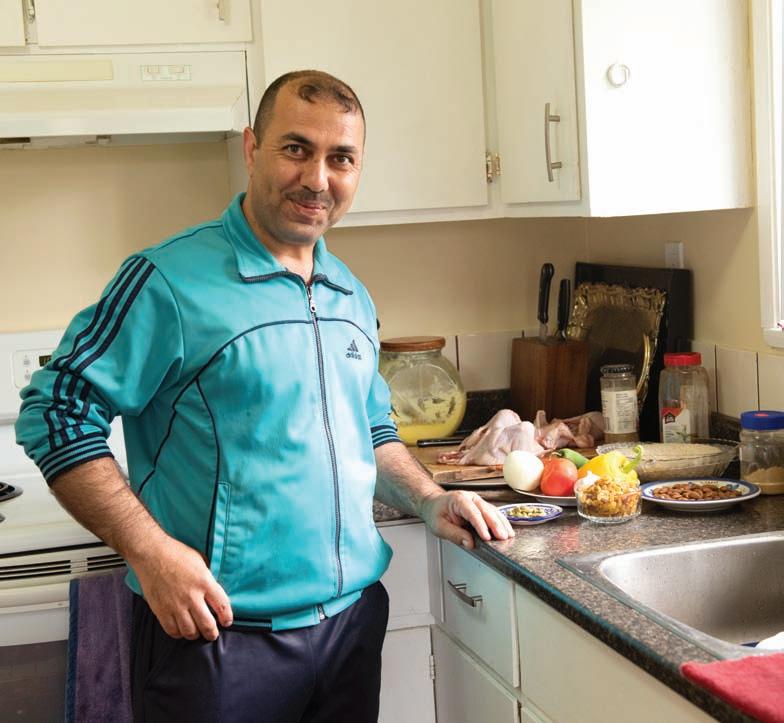
Home life is much calmer these days, and Nezar and his family are able to take the time to hold up their traditions, largely based on food. Reem and Nezar share the cooking duties and can often be caught dancing together as they prepare the evening meal. The family’s day centers around the main meal, which takes place at about 4:30 (breakfast is light but the large “lunch” suffices for dinner, as well). A large rug is spread on the floor and the family shares traditional dishes using Reem’s homemade flatbread in lieu of utensils and plates. A variety of rice or bulgur dishes are served and often feature lamb, chicken or fish when the price is right. Their sponsor, Doug, notes that they have been shifting to a dining room table and offering utensils to visiting Westerners, but when the Syrian community comes together it is always a meal served from the floor, family-style. Reem was used to hosting up to 30 extended family members and neighbours in Syria, and as such communal dinners are often served at the homes of those in the Syrian community. There is an unspoken protocol that requires you to either eat more than you can handle or politely decline no less than three times. In addition to traditional dishes, guests are presented with water, black tea or strong Arabic coffee and a variety of fruits and sweets.
Reem It is a powerful taste—thick, rich, aromatic and densely flavoured. We relax into a comfortable space that tells me we have shifted into a social time, free from questions and explanations. I am now truly a guest in their home.
Nezar and I head out to the back porch. It’s one of the first sunny warm days in Victoria, and we lean out over the railing to survey the backyard. “That is my garden,” says Nezar with pride, pointing to a carefully designed plot with dividers and labels. “Back home everyone has a garden. We always had fresh food. Now I have one here.” Next to the garden is an old dining room table with chairs. “We used to sit outside and take our food by the garden … we will do that soon.”
Nezar is connected to his home by food. His family is spread out across the world with some members in Germany, others in Jordan and still more living in Qatar. Reem’s family remains in Syria, and as the situation becomes more complex and many countries shut their borders to refugees, there is little hope they will escape the country anytime soon. However, Nezar and his family are happy that they have been able to build strong ties to the refugee and Syrian communities here in Victoria. The family has no plans to go back to Syria, even if peace does eventually return to their homeland. They are

One medium sized chicken, cut into 8 pieces FOR THE SAUCE
1 Tbsp yoghurt
2 Tbsp tomato paste
1 2 ts cumin
FOR THE RICE
1 2 kilo basmati rice
2 carrots, finely chopped or grated
1 green pepper (100 grams), finely chopped
2 tomatoes, finely chopped
1 medium onion, finely chopped
1 2 head of garlic, grated or finely chopped
1 2 Tbsp curry powder
1 tsp dry ginger
1 2 Tbsp cardamon
The family’s adjustment to Western food has been a bit more of a challenge. Doug refers to their taste for Western food as “decidedly unadventurous.” However, they have found that Victoria has a wealth of stores carrying good spices at a low cost and have seen little need to explore Western cuisine. One of reasons the family may have an aversion to Western food is that the scents, smells and tastes of Syrian food are bold, distinctive and resonant of a cuisine that has developed over a millennia, passed down by experience from one generation to the next. Filling their surroundings with the scent of allspice, nutmeg, clove and ginger may provide the family with a strong and evocative sense of truly being at home. As I said before, to exist in a place doesn’t necessarily mean we are truly connected to that place. The traditions they practice, the food they cook and the time they share together are all unified under the familiar bouquet of Syrian spice, providing them with the space they may need to reclaim their home as a family.
I take a slow draw from the delicate little cup of cardamom-laced Syrian coffee brought out by
safe, they are comforted and they are building a community around themselves.
Food is our connection to our home. It is the source of memories, of family and of our past. Being able to cook or taste food from our home has the effect of transporting us to a time when we were safe, loved and content. Nezar and his family are maintaining that connection by keeping their food traditions alive and sharing them with those around them. And if they ever decide they need to revisit Daraa, to taste a bit of their past, all they need do is pull out a pot and turn on the stove.
If you would like to help Nezar and his family, please reach out to jill@eatmagazine.com to get in touch with his sponsor.
If you would like to help with the broader resettlement effort here in Victoria, please reach out to the Victoria Refugee Initiative on Facebook, or visit them at victoriarefugeeinitiative.weebly.com
Special thanks to Doug McDonald for acting as intermediary during this process.
1 2 tsp black pepper
1 2 cup of raw almonds (pieces or slivers) and/or unsalted raw cashews
TO COOK THE CHICKEN:
In a large pot, boil the chicken in enough water to cover for 20 minutes. Remove the chicken and save the water.
Brush the chicken with a sauce made with the yoghurt, tomato paste, cumin and a pinch of salt
Braise the chicken in a 400-degree oven for 10 - 15 minutes, or until the chicken turns reddish colour
TO COOK THE RICE:
Soak the rice in warm water for 15 minutes, then strain; repeat
In a pot combine the carrots, green pepper, onion, tomato and garlic with the curry, ginger, cardamon and pepper.
Saute in a large pot in a few Tbsp of butter or margarine
Add the rice and twice the rice volume of the water saved from cooking the chicken. Simmer until the rice is fully cooked (about 20 minutes).
TO FINISH THE KABSA:
Meanwhile, sauté the almonds and/or cashews in a little butter. When softened, add a handful of raisins and cook just enough to soften the raisins.
Serve the cooked rice on a large platter and place the chicken pieces on top. Sprinkle the nuts and raisins on top. Garnish the dish with stalks of romaine lettuce placed upright around the edges.
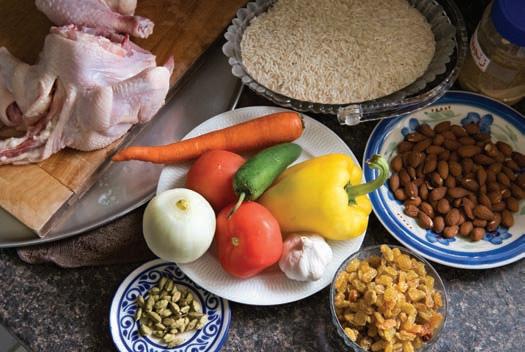
FOOD IS OUR CONNECTION TO OUR HOME. IT IS THE SOURCE OF MEMORIES, OF FAMILY AND OF OUR PAST. ”

“THE LIFE OF A CHEF IS ALL ABOUT PIVOTING AND ADJUSTING,” says Brad Holmes, co-owner and executive chef at Olo. Over a glass of beer at The Drake, Holmes talks about his passion for food and the culture that surrounds it and how when he moved here with his wife and business partner, Sahara Tamarin, he was eager to put into play some of the skills he’d learned working in Vancouver. Holmes mentored under notable chefs like David Hawksworth and JC Poirier, and the opportunity to own a restaurant in Victoria with his wife was exciting.
The pair opened Ulla in 2010 to quick acclaim, including being voted one of Canada’s Best New Restaurants by EnRoute magazine. But the work was tedious and allconsuming. “I was working the typical 70 hours a week as a chef and was burning out. So was Sahara.”
After the pair got pregnant, they realized they needed to make a change. “People were loving what we were doing, but a lot of them only came out for that kind of food once a year—maybe,” Holmes explained. “It wasn’t sustainable.”
So after five years of grinding work, they closed shop, rebranded and opened again as Olo, a scaled back version of Ulla. Olo remains wholly farm-to-table, but has a broader appeal with a menu that includes delicate and fresh dishes as well as a great burger. They do brunch on the weekends and have tasting menus. It’s a restaurant that satisfies the fussy foodie and the easy to please hungry diner.
Holmes stepped out from behind the stove on a nightly basis, and both he and Tamarin took on more high-level roles. He develops the menus and deals with suppliers and she runs the room two nights a week. They hired a general manager to run the day-to-day operations and both of them guide the overall direction of the business without being mired in the daily output.
Shifting from a fine dining restaurant into a more casual one was not what the pair had envisioned when they moved from Vancouver to Victoria, but they had to take stock of what the market in Victoria desired.
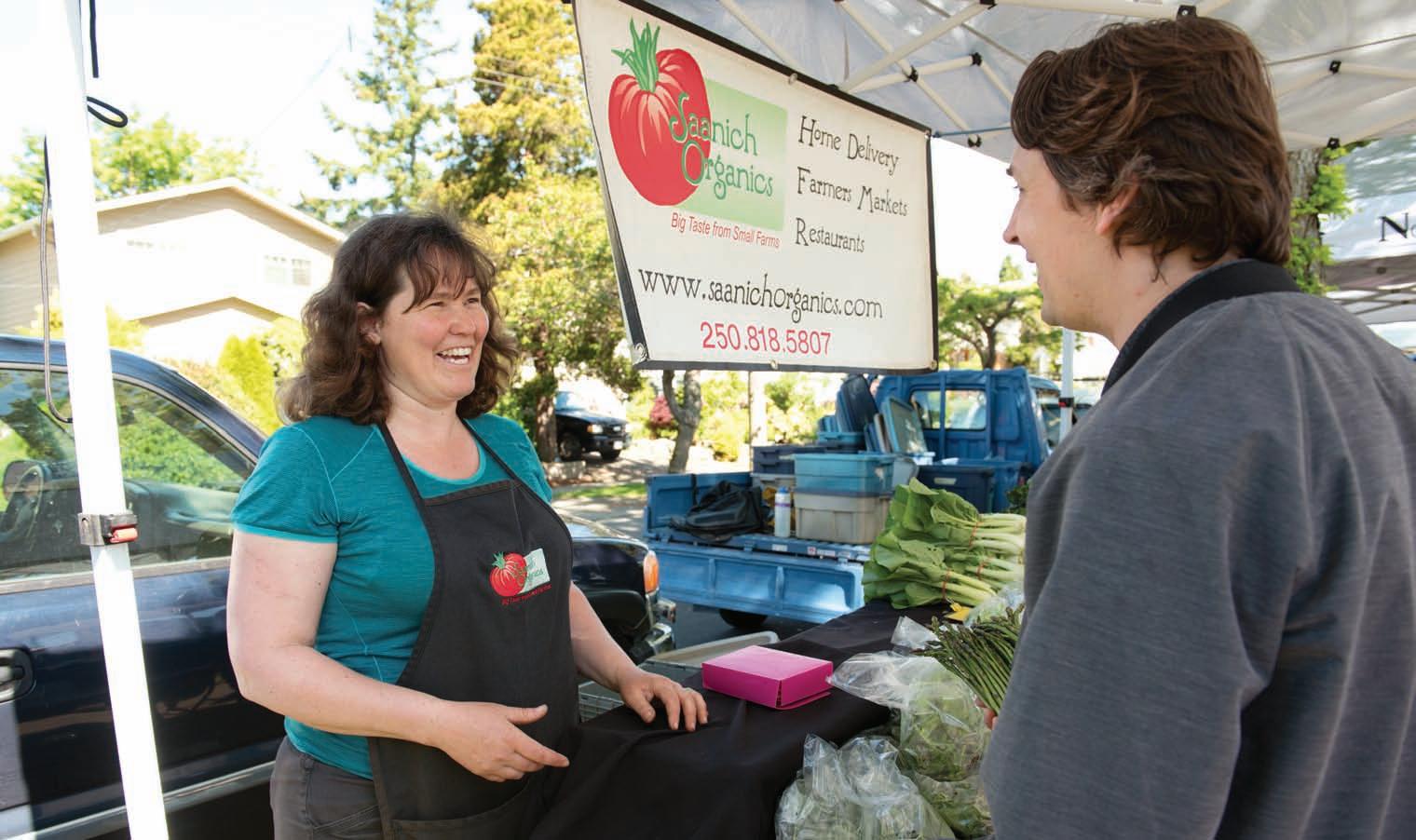
“I feel diners in Victoria look for a combination of things: familiar faces, ambiance, great food and consistency,” says Holmes.
While it was difficult to let go of some of the refined details in the kitchen that were the hallmark of Ulla, the pivot turned out to be a great move, both in terms of business and personal life. Olo has become a project that is helping the pair sink deeper into the community.
“Farm-to-table means to me that I know the farmer who grew the cucumbers we use in our gin and tonics. Actually, we know the people who made the tonic and the gin too” (Phillip’s Brewing Company and Ampersand Distilling Company).
With 20 staff at Olo, the pair can focus on running the restaurant instead of “being”
“FOR BRAD HOLMES AND SAHARA TAMARIN OF OLO … A MORE RELAXED RESTAURANT, MORE RELAXED WAY OF LIFE AS RESTAURANT OWNERS”
the restaurant. Not being in the kitchen or seating tables every evening allows them to actually engage more with that community and to focus on the creative aspects of their business. It also lets them spend time with their son, Nico, a stylish threeand-a-half-year-old who is as comfortable at a farmers’ market talking with a curious writer as he is inside the restaurant.
“Running into one of your farmers or suppliers out in public is part of it all,” says Holmes. “I love being able to say hi, maybe send over a drink at a pub. That’s something that is great about Olo and being in Victoria.”

This is especially evident at Moss Street Market. While the pair make sure to order their produce and meats directly from the farm, they still enjoy wandering the market to pick up the odd ingredient for something special that night at the restaurant. Following them through the various stands, it’s clear they’ve established a great rapport with many of the small, independent business owners in the community.
The family walks from booth to booth, inspecting what is in season and chatting with farmers and vendors. They run into Byron Fry of Fry’s Bakery and have a familiar conversation and a few laughs before moving on to pick up some vegetables for a dish that evening. Considering it’s a Saturday at noon, a time when most chefs would already be deep into prep for the evening, Holmes is casual about it all. In fact, back at the restaurant, a busy brunch is in full swing (served on Saturdays and Sundays), and both he and Tamarin are actively staying away. And that’s the interesting thing about making a pivot. While Ulla was a success in many ways, it was also a demanding endeavour. Exposing some brick, warming up the room and turning it into a more “Victoria” style restaurant has provided Holmes and Tamarin an opportunity to become more embedded in the community while having a life. They created a space where people feel more at home. With Holmes not always in the kitchen, he can engage more with customers. It leans more toward a bistro than fine dining and in Victoria, as Holmes pointed out earlier, that’s a good thing: it’s a place where people know your name and what you like to eat and drink
Olo has become the kind of restaurant that keeps people employed, while still putting out amazing, fresh, inventive food built from ingredients grown and harvested locally. It’s an enviable position.
“I think Olo is better for the community,” says Holmes as he finishes his beer and picks up the bill. Watching him casually walk back through Chinatown toward his restaurant at 6:15 p.m. on a busy weekday evening, it’s hard to disagree.
Olo
509 Fisgard St, Victoria, BC, 250-590-8795, olorestaurant.com
Near right:
FRESH ASPARAGUS AT MOSS STREET MARKET

Far right:
SAHARA AND BRAD HOLMES WITH SON NICO
Top:
UMI NAMI FARM’S FRESH GREENS
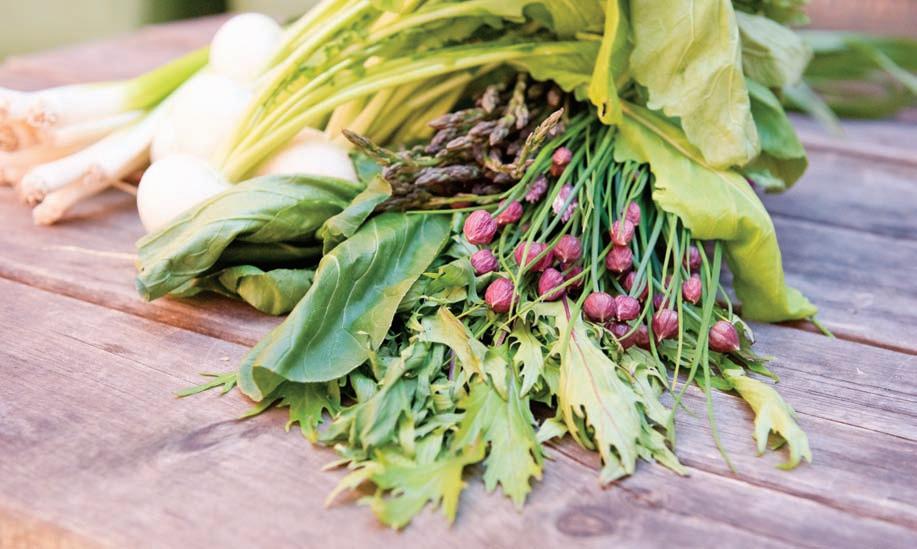
Above:
BRAD PREPPING GREENS, AND BUILDING A PIZZA(right) FROM HIS OWN PIZZA DOUGH, HOUSE MADE CHEESE AND THE MARKET GREENS.


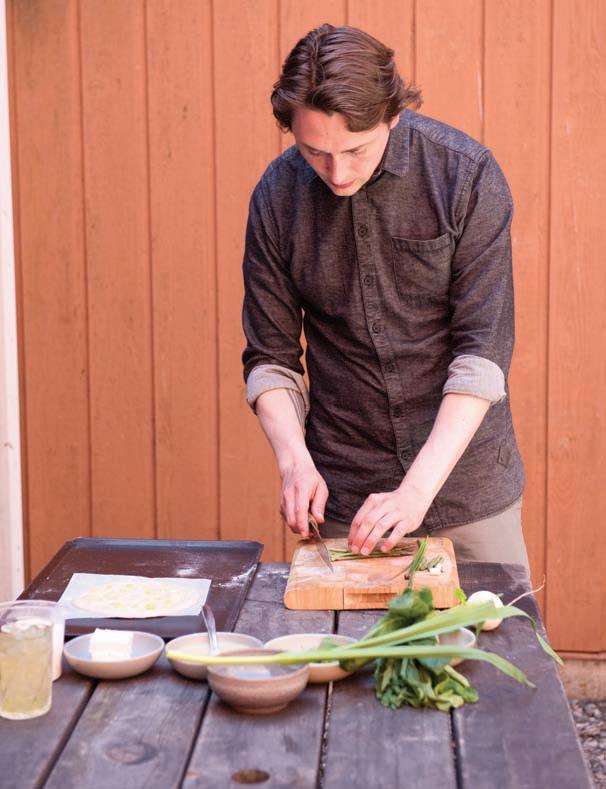


Piri Piri sauce traces its origins back to the 15th century when Portuguese settlers in Africa came across the African bird’s eye chili pepper and made a spicy marinade with crushed chilies, garlic, red wine vinegar, paprika. From there it travelled the world, evolving as it went. Today, it’s a staple in Portugal and is popular in the former Portuguese colonies of Angola and Mozambique. The moderately spicy sauce gives skin-on butterflied chicken a robust flavour. Paired with a fresh mint pesto salad and chilled rosé, you are set for some patio time.
Serves 4.
Chicken
1.6 kg (3¼ lb) butterflied chicken
Pair with a British Columbia rosé.
Suggestions:
Stoneboat Rosé vibrant with grapefruit, wild-berry and watermelon
Blue Grouse EstateWinery Quill Rosé dry and light-bodied, macerated strawberries
Clos du Soleil Rosé wild strawberry, raspberry jam, and baked rhubarb
Averill Creek Vineyard Rosé fruity & refreshingly dry. aromatic.
Mission Hill’s Five Vineyards Rosé ripe fruitiness and refreshing
Tip: If you prefer not to worry about chicken cutting techniques, ask the butcher to butterfly the chicken for you. Or you can use other cuts of chicken on the bone.
Piri Piri Sauce
6 fresh long chilies
1 tsp finely grated lemon rind
2 Tbsp lemon juice
4 cloves garlic, halved
2 tsp sweet paprika
1 tsp salt
½ cup olive oil
To make the piri piri sauce
Half the chillies lengthways; remove and discard seeds. Coarsely chop all chilies and add to a small food processor with all remaining ingredients until well combined.
Place the chicken in a large glass dish or large sealable plastic bag. Put 1 Tbsp of the sauce aside for use later, add remaining sauce and thoroughly coat the chicken. Cover the dish or seal the bag and refrigerate for up to 12 hours. (To give the chicken even more flavour, loosen the skin with your hand and spread some of the mixture underneath.)

Preheat one side of the grill, setting the burner to high. Oil the grate on the unheated side.
Lay the chicken flat on the unheated side of the grill, skin side down. Close the lid. Discard the marinade.
Cook for 25-30 minutes. Brush the chicken with the piri piri sauce kept aside and diluted with ¼ cup water a few times during cooking. Flip the chicken and continue cooking for about 35 minutes or until cooked through and chicken has reached a Food Safe internal temperature of 165°F (74°C).
Serve chicken with steamed green beans and grilled tomatoes seasoned to taste.
Mint Pesto and Mozzarella Salad
6 mini cucumbers, sliced
12 cherry heirloom tomatoes, cut in half
250 g buffalo mozzarella, torn
1 small red onion, sliced
½ cup fresh flat parsley leaves
Pine Nut and Mint Pesto
3 Tbsp pine nuts
1½ cups fresh mint leaves
1 cup fresh flat-leaf parsley leaves
1 clove garlic, crushed
2 tsp finely grated lemon rind
1 Tbsp lemon juice
½ cup extra virgin olive oil

To make the pine nut and mint pesto
In a small food processor, add all ingredients and blend until smooth; season to taste and refrigerate until ready to use.
To make salad, layer tomatoes, cucumbers and mozzarella on a platter; top with red onions and parsley. Drizzle with pesto.
RECIPE + STYLING Isabelle Bulota
PHOTOGRAPHY André Rozon
balanced menu for some no-fuss patio dining.


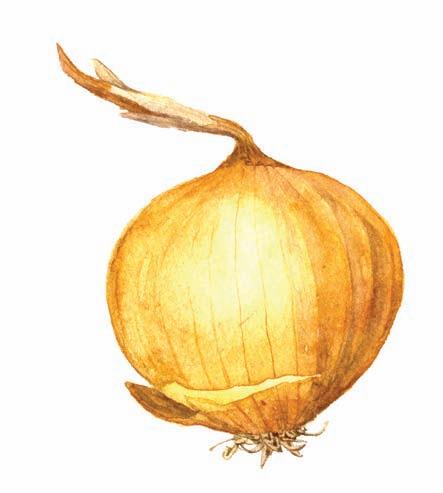
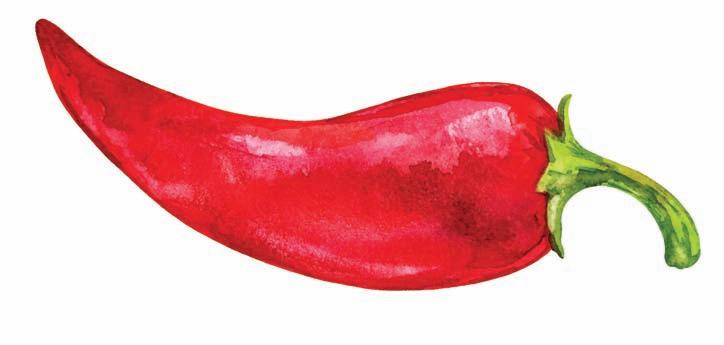
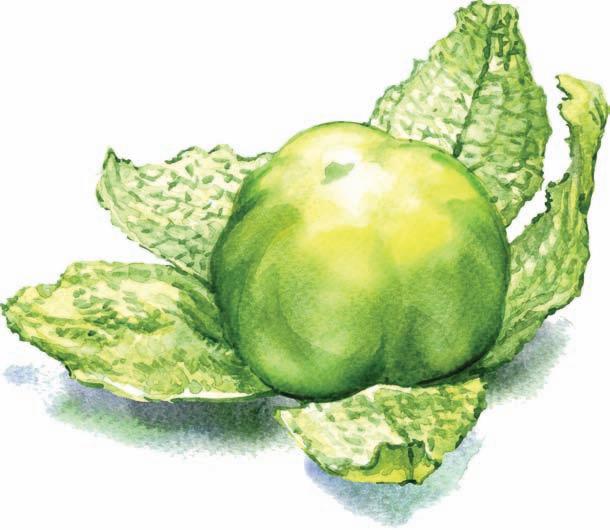
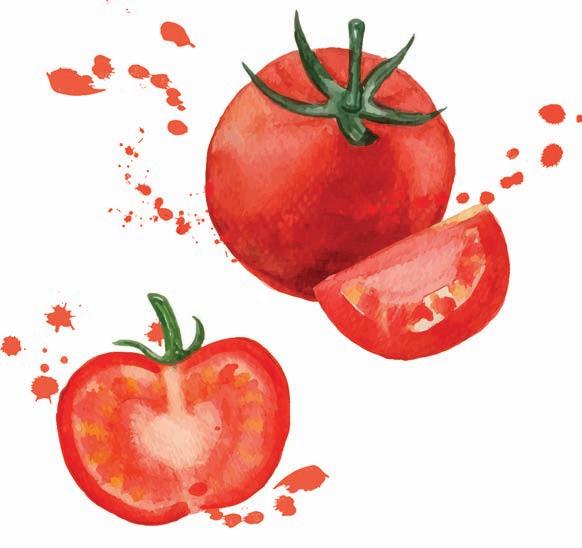
SALSA MAKES FOOD DANCE. Its endless versatility and flavour profiles enliven anything from tortilla chips to robust stews. It adds zest and zing in its freshly chopped state, and awakens deep earthy complexity when its ingredients are roasted, toasted or otherwise cooked. No wonder it is one of the most popular condiments in the US and Canada. In salsa’s birthplace of Mexico – where the chile pepper was born – it’s an important cultural and culinary condiment. A table set without salsa is no table at all.
For the last 26 years, I’ve tripped the light fantastic through Mexico, and the salsas I’ve encountered along with way have never ceased to dazzle me.
A tropical coastal salsa of chopped serrano chilies and pineapple worked sweettangy-fiery magic on tacos al pastor. Smoked and dried chilies, first puffed up in hot ashes, then hand ground in a volcanic stone mortar, along with cooked tomatillos and garlic, is Oaxaca’s wonderful version of a table salsa (and one I recreate often at home). Further down the road, that same smoky chile, ground with cooked wild vine tomatoes and toasted gusanos (grub worms), was enjoyed with handmade hot corn tortillas and bracing shots of artisanal mezcal. And on the Yucatan coast, a unique thick salsa known as sikil p’ak, of toasted ground pumpkin seeds, roasted tomatoes and the fiery chili habanero, set my palate alight – in a good way!

There’s no end to definitive texts on the subject. Influential chefs and authors such as Rick Bayless, Roberto Santibanez and the exacting Diana Kennedy all offer their take on the timeless condiment, from authentic to nuevo, providing a lifetime of inspiration.
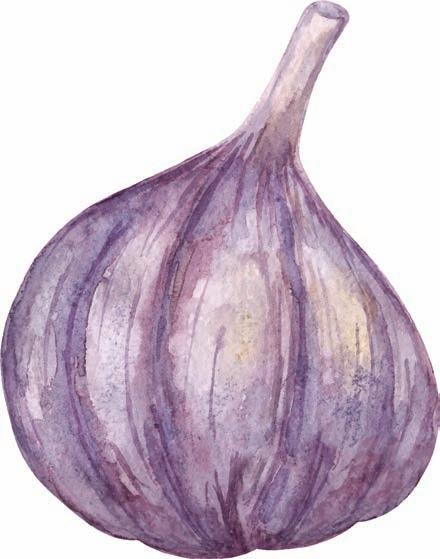
In the 1980s, the popularity of Southwest cuisine shone a spotlight on salsa, taking it beyond its south-of-the-border roots. Due in great part to chef Mark Miller of the Coyote Café, fresh mango and pineapple salsas became standard accompaniments on fish and meat menus everywhere.
Fast forward to the present day. The proliferation of taquerias, food trucks and taco stand pop-ups, from Paris to Victoria, are bringing salsa’s lively shimmy to our collective palate, and with great success. Started by passionate chefs and cooks, the menus are inspired by travel and Mexican culinary culture with fun fusion thrown in to the mix.
At Jason Sussman’s Tacofino, travel in Latin America, bold flavours and laid back beach and surf culture were the sparks behind his taco-focused menu. His classic Baja-style fish taco, for example, finds crispy lingcod with chipotle mayo on a corn tortilla with a salsa fresca that makes the whole package sing. Tacofino’s version uses Roma tomatoes, purple onion, cilantro, jalapenos – and their seeds – and a hit of lime juice. “It’s great,” says Sussman. “Especially on fried fish. The taco comes to life.” It’s juicy, crunchy, verdant and packed with vitamins.
The use of Roma tomatoes, as most recipes will tell you, is the perfect choice when making a tomato-based fresh salsa. The tomato holds its shape when chopped and doesn’t exude a lot of water, as field tomatoes do. The tomatoes should be ripe for the best flavour. A little ripening tip is to leave the tomatoes on the counter, not the fridge, to properly ripen and develop flavour. It works like a charm. Another tip for success is to hold back on the raw onion. It can overpower and throw a salsa out of balance. I often soak my onion first, for around 20 minutes, to deflame it.
Another favourite fresh Mexican salsa of mine is a salsa verde, that blends raw tomatillos with a bit of garlic, jalapenos, salt and avocado. It’s a creamy, bright mix that takes the avocado away from its usual guacamole guise, and is delicious on damn near everything, including greens. If I’m not making my own, I head over to La Taqueria where family recipes and collaboration are the inspiration behind Mexican-born Marcelo Ramirez Romero’s muy autentico menu. The salsa verde is part of their salsa bar and is a great starting point for those who are timid about heat. Another one from the bar is a toasted ground salsa of dried arbol chilies, garlic, salt and oil. It’s bold, earthy and addictive, especially on La Taqueria’s carnitas or beef cheeks. I’ve enjoyed this particular salsa many times in Puerto Escondido and realized I’d had similar versions in Vietnamese pho and Chinese restaurants. Through global trade, in particular the Colombian Exchange of the 15th and 16th Centuries, the chile pepper shook its hot stuff throughout the world’s cuisines. Think paprika, sambal, Korean gochujang, Szechuan cuisine, Thai curries, and harissa, to name a few. For the sake of culinary research, I recommend trying the housemade versions of this ground chile condiment at Victoria’s Loy Sing, and Pho Boi. The similarity to the Mexican version is astonishing.
For chef Anna Hunt of Bread & Butter Catering, she prefers to serve freshly chopped chilies on the side for her salsa fresca. “Everybody likes salsa but not
everyone like chile,” says Hunt. Her version is featured on her Taco Table menu where guests build their own tacos. The salsa uses seeded Roma tomatoes, some hand chopped and some pulsed in a food processor for texture variant, along with chopped green onion, shallot, cilantro and garlic. For those who like chile, she also serves a cooked salsa that takes its cue straight from Miller’s Coyote Café cookbook. Find blackened tomatillos, roasted garlic, onion and chipotles en adobo, seeds and all, for a smoky fiery heat.
The advantage of a cooked salsa is its lastability, especially for a table salsa. While a fresh salsa is meant to be consumed the day it’s made (otherwise the flavours dilute), a cooked salsa will last a few days, and some can even be frozen.
Tacofino’s table salsa blends dried ancho chilies with roasted serranos, jalapenos and onions. It’s a versatile version for diners to add as they wish. They also prepare a cooked salsa verde of tomatillos, serrano chilies, garlic, cilantro, onion and a lively tang of vinegar, that’s killer on roasted meats.
Once ingredients are roasted, toasted or boiled, and then blended together, cooked salsas often need even more cooking time to season. This is particularly important when using varieties of dried chilies, such as anchos. The blended mixture should be added back to a saucepan, brought to a boil and then simmered. This process takes away from a dried chilie’s sharpness and creates a mellow balance of flavours.
Salsas utilize simple ingredients, and for the most part, they’re available year round. Even dried chilies can be procured at your local grocer store. All you need are a few recipes to get you started, a sharp knife and a blender. They transform a meal by providing counterbalance, a blast of nutritional goodness and a way to bring a dish to life – creating a happy dance in your mouth!



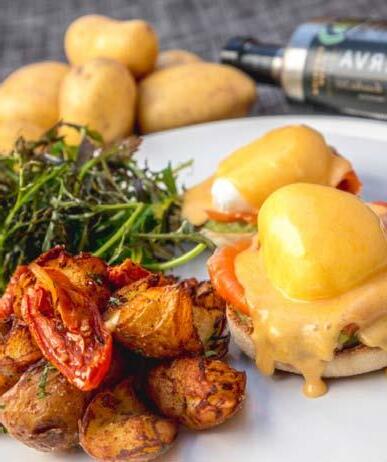
















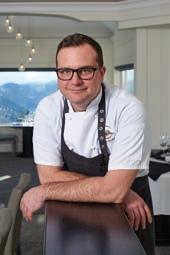
I’m really excited and looking forward to working with more seafood on the upcoming menu at Villa Eyrie Resort. During my years in the kitchen at Sonora Resort in the Discovery Islands, I worked with only the best seafood available, and I won’t change my standard at Villa Eyrie’s Summit Restaurant. We use only the very best local ingredients.
We currently feature fresh halibut and Chinook salmon. I buy only the whole fish with the head on whenever possible. That’s because the whole fish with the head on gives me a lot more to look at when doing a quality check. I look for bright and clear eyes. Shiny, firm flesh and a bright red-coloured blood line are other good signs when you’re at the market looking for the best fish. I recommend Finest at Sea for the home cook as a great source for the best fish purchase.
On our menu from the cold side appetizers, we have a dish of braised, marinated and grilled octopus with pickled, spring vegetables. Pacific octopus is a bycatch of the spot prawn fishery, and I love using it. And using commercial bycatch is the responsible thing to do. The dish is called Octopus Giardino after the Beatles’ song Octopus’s Garden.
I have a great appreciation for seafood from the Pacific Northwest. One dish in particular that we leave open every day on our menu is Market Catch Crudo. It is inspired by traditional cuisine from the Mediterranean coast, a dish that we come up with daily featuring a raw or lightly cooked or cured seafood preparation. This is something we may expand on going into the summer by featuring a small crudo menu on the weekends.
Heirloom tomatoes will be a big part of this season’s menu too. We have 100 heirloom tomato plants in our new greenhouse, and I can’t wait until they start producing. One of my favourite combinations is tomato, strawberry and cucumber with a fruity olive oil and aged Modena balsamic vinegar. We are also lucky to have our own buffalo mozzarella on Vancouver Island from Natural Pastures in Courtenay. I love to use it as well.
I haven’t spent a summer at Villa Eyrie yet; I started as executive chef here last fall. So we’re still building relationships with local farmers and foragers. I’m inspired every day by all the quality products being produced in the Cowichan Valley and, of course, the delicious seafood bounty of our waters.
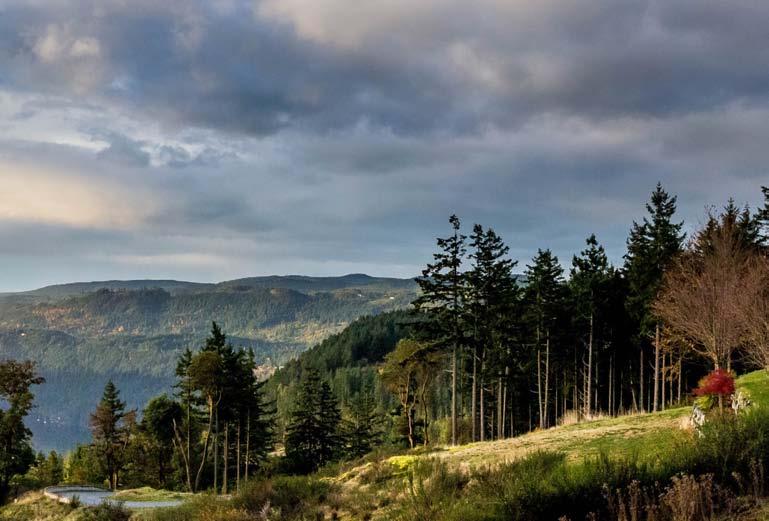
From left to right:
Yoka van den Berg (Owner, YOKA'S), Micqualyn Waldie (Organizer, THE GOOD FOOD BOX), Michael Shamata (Artistic Director, THE BELFRY THEATRE), Carson McKay (Manager, TACO JUSTICE), Christine Warde (Owner, NORTH PARK BIKE SHOP), Leon Zetler (Owner, AUBERGINE SPECIALTY FOODS), Chris Jones (Owner, JONES BAR B QUE), Michael Colwill (Managing Partner, THE FERNWOOD INN), Ed Cunningham (Roaster, FERNWOOD COFFEE ROASTERY), Tristan Mapstone (Barista, THE PARSONAGE CAFE), Britt Buntain (Owner, PICOT COLLECTIVE), Neil Davis (Owner, MESA
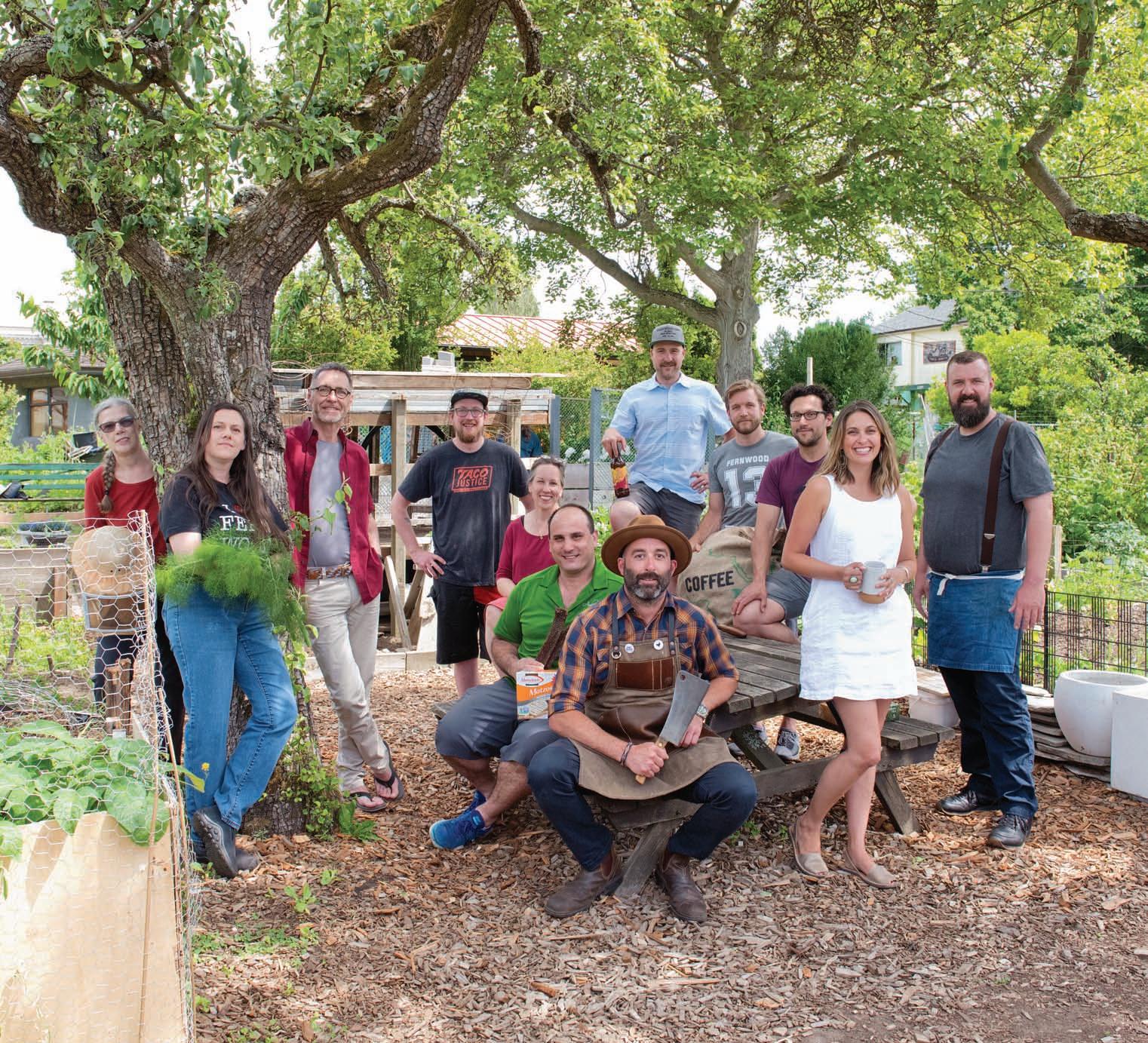
Victoria is built around dozens of different neighbourhoods, each bringing its own unique flavour to the makeup of our city. James Bay melds tourism and history, Cook Street adds an upscale west coast vibe to everyday living and the upstart Vic West is forging into the future with its refreshing approach to architecture and housing for young professionals. At the centre of it all is unapologetic, incurably eclectic Fernwood. Extending, for our purposes, into the area known as North Park, the two neighbourhoods bring together people of all classes, origins and identities to live, work and create in the heart of the city.
A decade ago, this neighbourhood was known for its low cost of living, which attracted university students, artists and artisans and local producers. The narrow streets, lined with character houses that had seen better days, drew in a younger population whose communal lifestyle included late-night jam sessions, house parties and backyard barbecues. Its proximity to downtown appealed to free and wandering spirits that still haunt the hood to this day. Many Victorians have a story that centres around a night in Fernwood. Many have lived in the neighbourhood or stayed maybe a bit too long after
graduating from university. There is a specific type of Victoria cool and most likely, if you have it, it was born in Fernwood.
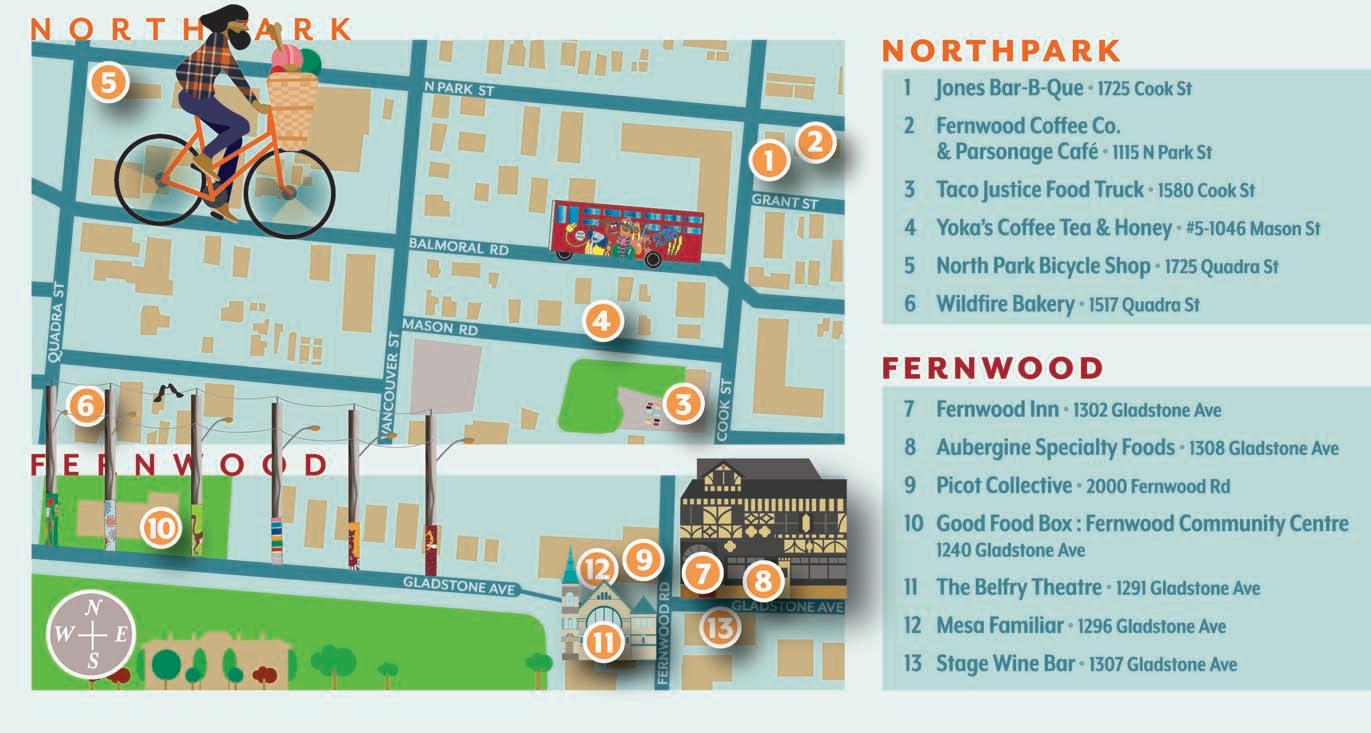
Today, gentrification is moving in. Old homes with their picturesque dilapidation are experiencing a rejuvenation as families and young professionals migrate to this central neighbourhood. But Fernwood’s unshakable eccentricities and penchant for independence are still alive and well.
Fernwood was the territory of the Songhees First Nation until Fort Victoria was established in the mid-1800s. The area provided Victoria with its main water supply in the form of a vibrant little spring from which the neighbourhood’s earliest name was derived—Springridge. It wasn’t until Benjamin Pearse built Fernwood Manor in 1860 that the area became known as Fernwood. (The house was demolished in 1969 to make way for an apartment complex.) The vibrant commercial centre at the intersection of Fernwood and Gladstone was built around what was once a streetcar terminus that connected Fernwood to the downtown core. Today, anyone who thinks of Fernwood will think of that intersection, proudly guarded by the Cornerstone Café, the Fernwood Inn and Belfry Theatre. The trifecta of history, community gathering and entertain-
Fernwood and North Park, cool, creative and community-minded, are uniquely themselves.
ment have sustained Fernwood through the decades and ushered in the animated and attractive environment it is today. Fernwood NRG (Neighbourhood Resource Group) has been the hub of this community since 1979. Focusing on affordable housing, providing childcare services and advocating for a diverse and inclusive community, NRG has kept Fernwood tight-knit and vibrant as well as environmentally, economically and socially sustainable. One of the most interesting aspects of the organization is its dedication to local food security. With a community orchard, a neighbourhood kitchen garden and the food forest Springridge Common, NRG has been in the vanguard of feeding their community through socially responsible neighbourhood development. The centre also runs The Good Food Box, a non-profit alternative fruit and vegetable distribution system that focuses on local, pesticide-free fresh food.
Stroll down Cook Street this summer and see if you can’t smell Jones Bar B Que smoking their meats, fresh daily. Jones Bar-B-Que takes the slow cooked Texas BBQ tradition and serves up some of the best meats in town: smoked BBQ, done slow, served quick and tasty.

In 2016, Chris Jones, and Josh Goyert, co-owners of The Ruby branched out of the brunch crowds and brought Victoria its first authentic Texas BBQ shack on the outskirts of Fernwood. Walking in is like stepping into Texas—horns on the wall and all. You’ll hear Texas twang, see the big slabs of barbecue on the chopping block, and of course smell true Southern BBQ, including their dry-rub pork side ribs that have become a neighbourhood favourite and sell out every day!
But why Texas BBQ? Simply, Jones and Goyert fell in love with the flavours, the smoke, the culture, and the tradition. Jones learned the
Jones Bar B Que
1725 Cook Street, Victoria BC (778) 265-4227, jonesgotmeat.com Facebook: /jonesgotmeat
Instagram @jonesgotmeat
craft in the smoke pits of Austin, Texas where he trained with some of the best pitmasters around. Jones learned every aspect of the art: how to choose the right wood, stoke the fire, mix some original rubs, and be patient: slow-cooked meats take hours to reach perfection. Texas Bar-B-Que isn’t just some meat on a grill. It’s practically a lifestyle.
What’s the result? Incredibly tender and savoury meats that will get you hooked. Try a three-meat plate and sample some smoked chicken, porkbutt, and smoked Red Barn sausages. Pair those with some homestyle potato salad and smoked pit beans, and you’ve got a meal that will keep you coming back.
Do you have a hungry group? Ask Jones’ staff about their catering. They’ll come to you.
Be sure to get there quick—Jones’ meats sell out on most days.
With that in mind, it is no wonder Fernwood is a concentrated hotspot for food in Victoria. Stage Wine Bar was immediately ranked among the top 10 in Enroute’s coveted new restaurant list the year it opened in 2008. The relaxed room makes for a great pre-dinner spot before heading to a show at the Belfry. The Fernwood Inn serves up the uber-popular quiz night with comforting pub food and a great lineup of local beer, and Mesa Familiar on Fernwood Square brings in vegetable-forward Latin fare adding a diverse flavor to the Fernwood menu. Aubergine Specialty Foods is the place to get all of your fresh berries, seasonal veg, local kombuchas and specialty products—essentials you might otherwise have to leave the hood for. More recently, the pared-down aesthetic of Picot Collective has added a lovely selection of hand-potted mugs, delicious candles, finely crafted woven wares and other delightful sundries to complement the hygge-inducing feel of the neighbourhood. With housing demands on the rise and a population increasingly concerned with finding new ways to keep our city interesting through small business ventures, North Park has become something of an extension of Fernwood. Many of us think of the businesses that moved into this area as part of Fernwood, but don’t be mistaken. North Park is a neighbourhood unto its own. For years North Park was a thoroughfare, an underdeveloped expanse that acted only as a bypass to Fernwood. Now it has drawn down the eclectic vibe, connecting the downtown core to one of our city’s best-loved residential neighbourhoods.
Wildfire Bakery was the first to strike, starting a long-lasting Victoria love affair with handcrafted artisan breads and pastries. The bakery’s exterior walls have a distinctly Fernwood vibe. Showcasing the artwork of local graffiti artists, its murals are dedicated to loud and unapologetic social causes that the city and province tend to shove under the rug. A couple of blocks away, on Cook Street, the
“
Quirky, funky Fernwood and edgy, eclectic North Park have become the beating heart of the Victoria.”
Taco Justice food truck sits smartly in the vacant lot beside Wellburn’s Food Market, the equally loved and maligned local grocery store. The lot has long been a favourite for graffiti artists, and Taco Justice brings in exciting West Coast and fusion tacos to meet the tastes of the colourful local population.
Jones Bar B Que is the new Victoria darling when it comes to getting your meat sweats. Downhome cooking straight out of the south, complete with fluffy sliced white bread, Jones has started to draw people from all over the city, inviting them to get comfortable in its North Park digs. But a destination that never really went out of style is Fernwood Coffee Co. & Parsonage Café. Fernwood Coffee produces some of the most consistent and hearty blends known to the discerning palate of Victoria coffee lovers, and The Parsonage Café is a hangout for Fernwood/North Park locals, a favoured meeting spot for Sunday brunch or a light afternoon lunch. But don’t forget about the mom ’n’ pop roasters, Yoka’s Coffee Tea and Honey, a Vancouver institution that set down its roots in 1983, relocating to its cozy spot on Mason Street in 2010. These cats are old school and are dedicated to keeping the dark roast alive.
North Park is an undiscovered neighbourhood. Yes, it can be considered an extension of Fernwood, but you could get lost on a weekend just trying to hit all of these little gems along the way. Grab a bike, get it tuned at North Park Bicycle Shop, get some bread, get some coffee and get reacquainted with Victoria’s newest old neighbourhood.
Fernwood and North Park are their own unique hoods. There is no desire to bring in tourism. And it is decidedly OK with that. This is a neighbourhood for Victorians: it welcomes all and bars none. It has something for everyone and if you want to pitch in and be part of the action, your support and community mindedness are all that are required.
We are the only Texas barbecue restaurant in B.C. So that’s probably the most unique factor. There’s other barbecue, but it’s all on the mainland, and in term of traditional Texas style, we’re the only ones. With this, there are no shortcuts, and there are no reheats. It’s kind of live by the sword, die by the sword.
What it means, geographically, is a dry-style barbecue. All other regions use mops to sauce their product as the process goes, where Texas-style is dry all the way through. It can really harm you if you don’t sell everything, or do the volume you need to do, but we’re pretty committed to that process.
I think what sets us apart is our staff and our approach to service. I don't mean to downplay the quality of our food or drinks, but there are plenty of places in town that do great stuff.
Ten years ago, a group of young, local investors threw caution to the wind and purchased TheFernwood Inn. Led by Managing Partner Michael Colwill, The Inn has been on the leading edge of Fernwood's transformation. Focusing on locally-sourced ingredients and area microbrews, it offers a menu of gastropub favourites, with a West Coast flair.
The familiar Tudor façade kitty corner to Fernwood Square is more than just a pub-style restaurant and ten rental apartments. It's a community gathering place: Fernwood's living room, playing home to art lovers, musicians, sports teams, students, reflective of its owners, young families. Its latest offering, The Fernwood Pizza Company, will soon join it next door.
The Fernwood Inn
1302 Gladstone Avenue, Victoria BC 250-412-2001 fernwoodinn.com
For us, coffee and food is a way to engage community, connect to place, and to build relationships. Fernwood Coffee Company was established in 2007 after we took over The Parsonage Cafe. We've worked hard to make our cafe and roastery a cultural staple in Fernwood.
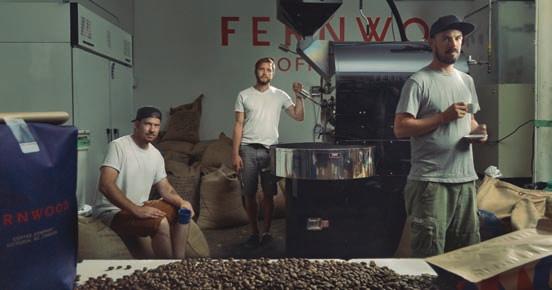
We hand craft and roast only the finest coffees, and constantly experiment to highlight the best that each carefully sourced coffee has to offer. We source ingredients from local farmers, butchers, fishmongers, and bakers to provide a menu that’s fresh and local. Classic yet contemporary, our seasonal menu is developed with the same degree of care and attention that goes into our award winning espresso and filtered coffees.
We provide a meeting place that reflects our devotion to coffee and food, community, and culture in Fernwood.
1115 North Park St,, Victoria BC, 250-383-5999, fernwoodcoffee.com
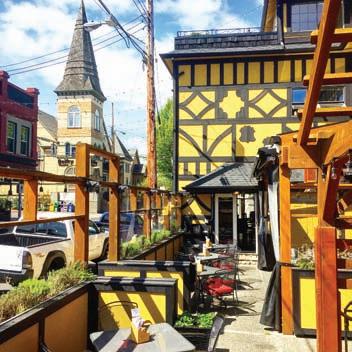
Adrian Paradis asked owners and staff at eleven Fernwood businesses what makes their business stand out.
Nestled in funky Fernwood, Aubergine Specialty Foods is dedicated to inspiring one’s culinary imagination. From the frequent local shoppers to the visiting browser, everyone is sure to be tempted by the local produce, international products and the freshly roasted coffee from the antique roaster.
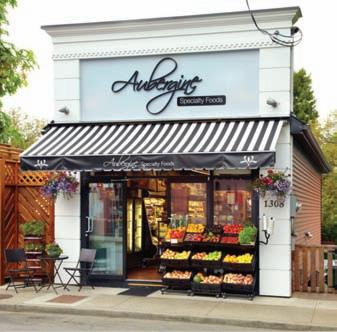
Located on a quiet and picturesque side street in central Fernwood, Aubergine brings a wide selection of meats and cheeses, exotic oils, eastern spices, South African products, kosher items, and so much more! So take your cup of java to go, or stay a while and listen to the tall tales of South Africa as told by Leon, Aubergine’s owner and chief “food nut”. Either way you’re sure to come back.
Aubergine Specialty Foods
1308 Gladstone Avenue, Victoria, BC (250) 590-1031
auberginefoods.ca
Where we stand out is in the character of our staff and the kindness they put out to our guests (and each other). I love walking into the shop and seeing such a varied demographic. The fact that anyone can feel comfortable and welcome in the Parsonage is something we’re really proud of. It's not uncommon for two people with nothing in common to strike up a conversation in the lineup and become “Parsonage friends.”
Our philosophy on the taco is unique. We will put anything that we believe is incredibly delicious into it. We don’t follow the status quo when it comes to the traditional Mexican taco, and we don’t follow along the lines of the Baja taco either. We will do Vietnamese, Japanese, Indian flavours, and all that makes us unique. The shell is just a vessel, and whatever we think is super-delicious is what goes into it.
We really try our hardest to create our own category of taco place. We don’t want to follow what anyone else is doing. We want to carve our own path in the taco world.
What makes us unique is that we are a roaster where the owner is always here dealing with the public. We also probably have more variety than anyone else. We have more than 20 varieties of coffee from all around the world, most of which are fair trade and organic, as well as bulk honey and specialty chocolate and teas. Most coffee shops make most of their business on drinks, but we make most of our business on our products.
We’re old-fashioned here. There are no digital scales, and the roaster is from the mid1930s. All you need to do is change the belt, and possibly a new motor from time to time, and it will survive forever.
Everybody here serves the community, as well as the costumers. We do a lot of community work, and that’s really huge for us. It’s about knowing people and developing that rapport.
We were helping out at Cool Aid Society’s bike station, and then the library’s bike-towork station back to back. Our main operative is to help anybody and everybody. We value our community, so we just try to be inclusive and honest with people.
Something we’ve been using as an expression lately is how we pride ourselves on being the neighbourhood living room. People like us for our food and drink, but we want to have everyone come in and feel comfortable while fitting right in. It goes along with the mentality that we are trying to offer, above and beyond our excellent food and drink.
Picot is a shop that you walk into and immediately feel welcomed and inspired. They’re known in Victoria and online for being a great place to buy beautiful high quality goods and products made with love and care. The owner runs the shop to include a wide range of independent creative businesses— making the shop a careful curation of modern handcrafted ceramics, jewelry, textiles, and natural skincare.
They are sought out for their own Honey Tobacco fragrance, a custom scent they’ve made famous as a candle and roll on perfume. Loved by both men and women, this fragrance is sent out to customers across the globe and is the reason you always leave their shop smelling so good.
During July & August Picot hosts Night Markets in Fernwood Square under the canopy of string lights. Locals flock to this market to enjoy the work of the city’s finest makers and artists. With live music, activities for kids, food trucks and a range of vendors that changes each week, this is a market not to be missed.
Find us in Fernwood Square Night Markets: 4-9pm Thursdays in July & August
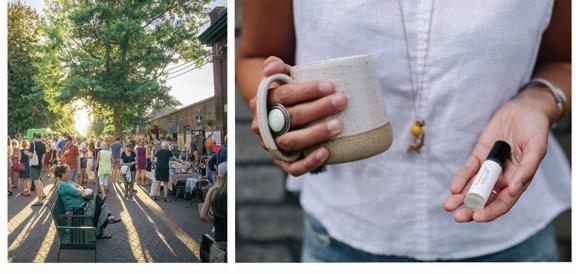
picotcollective.com @picotcollective #picotnightmarkets
Two things that make us unique are our South African foods and our kosher foods. We’ve got all the South African delicacies from back home like cured biltong, dried droëwors sausage and boerewors, which is more like a farmer’s sausage with lots of coriander. We also have our own coffee roastery, and lots of local, seasonal produce.
We import rooibos tea from South Africa, as well as spice grinders, drinks and hot sauces. So having a mix of South African foods, kosher foods, organic groceries, local produce and a coffee roastery is about all we can fit into a 600- square-foot store.

If we’re putting something on, whether it’s our night market or applying for a neighbourhood grant to get lights strung up, all the business owners will come together and work closely for things that bring the community together. We’re all invested in not just building our business, but the community and the neighbourhood around it. The support and gathering of everyone to make this neighbourhood something that people want to come to is so unique.
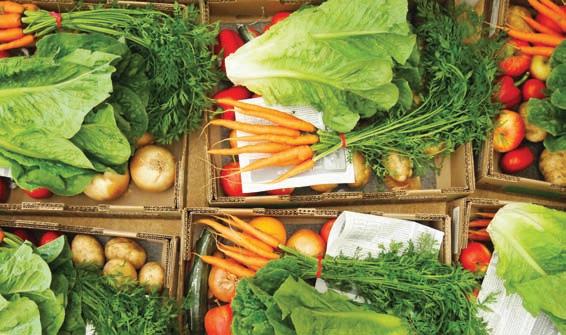
We are a non-profit project run by Fernwood Neighbourhood Resource Group, which is a charity in Fernwood. So we provide affordable produce to anyone that needs it. We don’t have a storefront location so our boxes are packed in the Fernwood community centre by volunteers and delivered by volunteers across the CRD to different locations where peoples can pick them up. Anybody that needs it can come and access that food. The physical restaurants are an awesome part of the food culture here in Fernwood, but we’re different because we’re allowing people to access food that they can cook at home. They can really get to know cooking skills and different produce and have that connection to food in their homes that they may not have otherwise.
The Belfry is in a unique position. We’re the city’s largest professional theatre company and we do contemporary work. We don’t do pieces that have been done often. A lot of time we are premiering new shows, or we are doing pieces that are maybe two years old at the top end. Often our shows will end up travelling across country. We build, rehearse and produce our shows here in our building in Fernwood. So we are trying to capture the culture of what’s happening in Canada right now and that’s part of our unique perspective. That’s something that people don’t always get about us. We are in a tiny church in Fernwood, so they may not get a sense of where the company sits in relation to its partner theatres across the country and the type of work that we do and the scale that we do it at.
I’ve got a unique perspective on Mexican food here. I’m from Terrace, B.C., but my parents started a Mexican restaurant when I was five years old. I grew up in the kitchen so the food is very familiar to me, but I understand it from a different perspective than someone from Mexico would. Comfort food for other kids was mashed potatoes and meatloaf, but I was into chimichangas and enchiladas from a very young age. I knew what a quesadilla was before a grilled cheese. So for me, I try to bring the local produce in as much as I can and treat it with a technique, rather than with a recipe.
We bring people together with stories. With love, from scratch, and with some of the country's best theatre artists, we build, rehearse and create our plays in our own home, a renovated 19th century church in the heart of Fernwood.
For over 40 years the Belfry has produced contemporary theatre, garnering a national reputation and premiering over 40 new Canadian plays that have have gone on to acclaim across North America, Australia, Europe and the UK. This August, after extensive renovations, we’ll start our new season with the sweet comedy, Bed and Breakfast. Photo - Meg Roe in Onegin by Veda Hille and Amiel Gladstone (starts October 2017) Photo by David Cooper.
The Belfry Theatre
1291 Gladstone Avenue, Victoria BC, 250-385-6815, belfry.bc.ca
Good Food Box is Victoria’s most affordable produce box. Offering a mix of local, seasonal, organic and conventional produce, we proudly support local growers by sourcing 50% of produce from Island and regional farms. A sample Organic Box ($20) may include an abundant variety of fresh carrots, spring greens, Island grown apples, mainland potatoes, and more. Pick-up locations range from Sooke to Saanich or get yours home delivered for only $3. Boxes are packed and delivered each Wednesday, so order online, by phone or in person one week in advance. We are a volunteer-run, neighbourhood-based project of Fernwood Neighbourhood Resource Group - by purchasing with us, you directly support food access in your community.
Fernwood Community Centre, 1240 Gladstone Avenue, Victoria BC, 250-381-1552 x 100, thegoodfoodbox.ca
This is not your average Mexican joint. Since opening in January, Mesa Familiar has quickly gained a following beyond their neighborhood regulars. Their rotating specials boast fresh ingredients and creative takes on Mexican staples including enchiladas, seafood, and of course tacos. What can’t be made from scratch is imported from Mexico to ensure authenticity in every bite. Vegetarians and gluten free patrons won’t leave disappointed. The intimate setting pairs nicely with its name, which translates to “family table.” The importance of family and flavors that pop has been instilled in the owner/chef since his upbringing in his parent’s Mexican restaurant. The ideas for the dishes have been simmering and evolving like a good mole in a cast iron pan.
Like any foodie knows, a dining experience cannot be based on the meal alone. The service is prompt and friendly, provided by a team of people who take “mi casa es tu casa” to heart. The crew prides themselves on versatility and the erasure of the front/back of house divide. On any given night, your ribs could be served by the same hands that brushed marinade on them earlier in the day. The commitment to guest experience is exemplified by this small but efficient team.
The bill always comes last. But leaving this gem with a full stomach won’t leave your wallet empty. The price point is tailored towards affordability without cuts to quality. Welcome to the familia. We’ll see you on the patio.
Mesa Familiar, 1296 Gladstone Ave., Victoria, BC, 778-265-4725
Helping Victorians cycle for 15 years now, North Park Bike Shop loves to hang out on the edge of downtown and Fernwood, where we can serve all sorts of folks.
Our passion for grease and most things that roll keeps us opening our doors every morning with a smile (or after coffee, anyway). We love what we do! Old or new, we deal with it all.
We pride ourselves on our service, and do our best to get you back on the road quickly. And we can help you find your new dream bike: from e-bike, to cargo to bike-packing, we do it all. Our fabulous, loyal staff are the reason we are who we are: we are YOUR neighbourhood bike shop - come down and see us sometime.
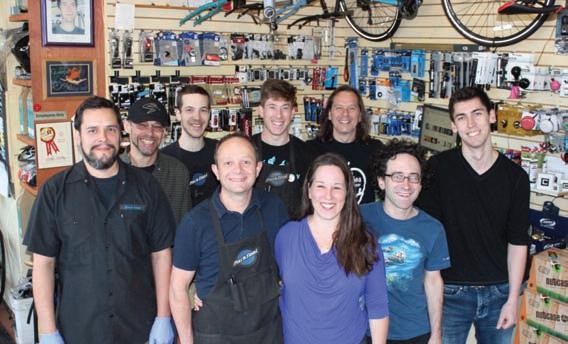
North Park Bike Shop
1725 Quadra Street, Victoria BC, 250-386-2453, northparkbikeshop.com
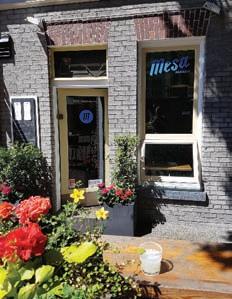
It’s been a wild 4 years since Taco Justice set up headquarters at 1580 Cook Street and while the landscape of Fernwood has gone through many changes, their approach to taco making magic has not. If you haven't yet sunk your teeth into one of their immaculate creations, just know that the rumors are true and those who have are living a better and happier life than you. Insatiable cravings will be satisfied both here and afar thanks to the newest truck in our fleet, so come find us at our headquarters 7 days a week or a festival near you. What are you waiting for, Christmas? You’re welcome!
Taco Justice Food Truck, 1580 Cook St, Victoria BC, 250-588-5400 tacojustice.com

Moving from Vancouver to Victoria in 2010 we luckily landed in North Park, a village between Fernwood and the city centre, where we know both our business and residential neighbours.
Our coffee roasting facility fits well with the wonderful local food producers like Mason Street Farm, Wildfire Bakery and Patisserie Daniel. Truly artisanal!
#5- 1046 Mason Street, Victoria, BC (250) 384-0905 yokascoffee.com











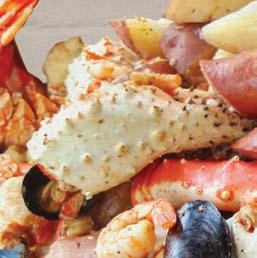
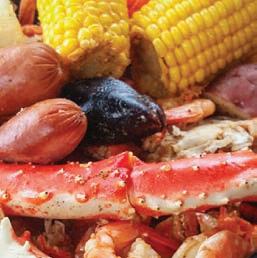












IS IT COST CUTTING? LACK OF PROPER TRAINING? OR AN INCREASED AWARENESS OF THE HEALTH RISKS OF SUGAR? WHATEVER THE REASON, SOME CHEFS BELIEVE DESSERTS ARE ON THE DECLINE. ADRIAN PARADIS—AND HIS SWEET TOOTH—INVESTIGATE.
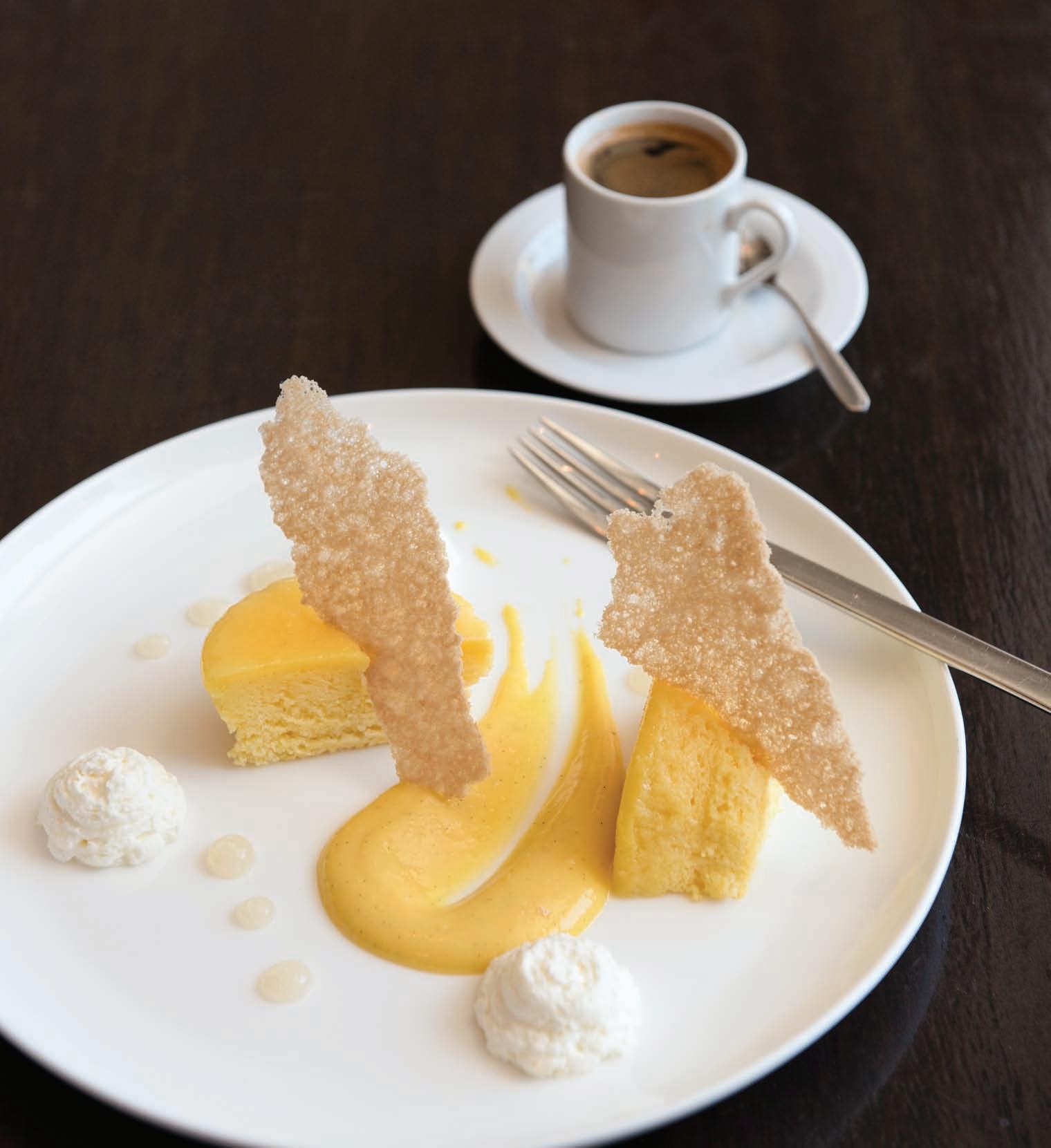












OSCAR WILDE WROTE IN THE PICTURE OF DORIAN GRAY THAT THE only way to get rid of temptation is to yield to it. This is often the approach I have with a meal’s final course: dessert. It’s easier to submit than fight a losing battle. Yet, these battles are more easily won when the only options are the same old blasé choices. Cheesecake or ice cream, for instance, won’t put up much of a fight.


While the war wages, some are determined to combat this confectionary blandness. Opinions remain mixed, however, with some chefs I talked to around town believing the dessert course is a thing in decline. Despite being the final impression one takes away from a restaurant, it often seems to be an afterthought; something offered to appease the sweet tooth of the masses rather than the final capstone to a dining experience.
Torin Egan, for instance—the chef and co-owner of Northern Quarter—is in the camp that thinks desserts are on the decline. He states emphatically that he is not a pastry chef, but he does love putting booze in his sweets. “There are certain desserts I can do very well,” he says, “so I stick to those. I’m not much of a dessert guy myself, but I love sweet and salty things.”
Despite his views on desserts, he’s been keeping things interesting by frying up batches of buttermilk doughnuts at Northern Quarter and glazing them in miso and maple syrup. A previous iteration of his doughnut included bacon, fig and pumpkin. The doughnut balls, looking a little like a Timbit, float in a small puddle of the salty glaze and have a chewy texture with a sour tinge. “I think people still love sweets,” says Egan, “but I would rather finish my meal with a nice cocktail to satisfy that sweet tooth.”
Similarly, Gabe Fayerman-Hansen—chef at Little Jumbo—feels that the dessert course may be losing popularity. “Around the small local restaurants,” he says, “desserts are a little bit of a dying thing.” His olive oil cake, however, is alive and well, served with limoncello custard for some “popping citrus notes,” as well as a basil fluid gel, candied lemon and an aerated wildflower sheep’s milk yogurt.


His chocolate two ways is a decadent, dark chocolate brownie, a chocolate mousse topped with Maldon salt, hazelnut brittle and an orange purée to hit those citrus notes again. Also in keeping with Little Jumbo’s speakeasy vibe, Fayerman-Hansen offers doughnuts with roasted apples and bourbon crème anglaise. While he says he doesn’t see the traditional customer base ordering a multi-course meal as often, FayermanHansen says he prefers the varied dinners. “We get people who come in late at night

and they want to crush some doughnuts and have a bourbon cocktail to pair with them. It’s better to not have just traditional dinners these days.”
Conversely, Robert Cassels—chef at Saveur—says he’s seen no decline in his desserts. He, however, chalks it up to the interesting options he presents. While steamed pudding may not sound enticing, Cassels serves a variant of the classic with coconut crème anglaise, yogurt whipped cream, lemon gel and dehydrated Earl Grey tea milk bubbles. The milk bubbles form a kind of cracker that melts on your tongue. Separated, the pieces are all unique and intriguing, but together in a single bite they become something more than the sum of their parts. “It’s kind of my style to make components that together will make that one flavour,” he says.
Cassels says he’s been evolving this dish for more than five years. It started as a simple pudding in a bowl before he added the crème anglaise. Then came the lemon gel, then the yogurt whip and more recently the milk bubbles. “I feel as if most people that are coming here are coming to dine and experience something they wouldn’t necessarily experience at another restaurant,” he says. “If it sounds really interesting, people will want to try it.”
Brad Holmes, chef at Olo, says he was trained by pastry people so he’s comfortably in his wheelhouse when crafting excellent desserts, such as his smoked chocolate cake with preserved cherries, ice cream and fresh toasted marshmallow. The rich smokiness of the chocolate pairs off against the soft toasted marshmallow to make something reminiscent of the best possible smore. “Dessert is an integral part of a tasting menu or dining experience,” says Holmes, “so I spend a lot of time on them and make sure we have at least two good options.”
Holmes also offers a fennel macaroon with Meyer lemon curd, which he freezes and then processes in a Pacojet, a machine that whips and purees frozen foods into an ultra-fluffy texture without having to thaw them. On top, there is a fennel and orange marmalade and buckwheat crumb. While he didn’t think his dessert sales were slowing down, Holmes reasoned that one reason for the decline may be the lack of proper pastry training. “The places that have pastry chefs, or have someone that has been trained properly, will focus on this and make sure it’s really good,” he says.
Finally, Jonny Lee—chef at Chorizo and Co.—is doing his part to offer something different. “Our churros have been here since day one,” says Lee, “and the recipe has evolved a little bit to find the best texture that we can.” Very different from a regular doughnut, the churros have a soft cakey texture inside with a satisfying crispy outside. They get rolled in sugar straight out of the fryer so they still have a little bit of oil on them and that helps the sugar stick. Optionally—but not really—you can get them with a warm chocolate dipping sauce, so rich it’s almost a ganache.
While most people in Victoria will see churros as a dessert option, Tomas Dosil—Chorizo and Co.’s owner—says that in Spain they are almost exclusively eaten first thing in the morning. Another tip he gave me: the leftover chocolate sauce is meant to be imbibed once the churros are finished.
So whether it’s first thing in the morning, or late at night, that final bite of something sweet will be the last taste patrons walk away with and the impression they keep with them. Victoria’s plethora of plain options is therefore all the more baffling. Perhaps it is the lack of proper training, an increased awareness of the health risks of sugar or the efforts to cut costs in an industry with brutally thin profit margins. Regardless, one could argue that no meal is complete without that final palate cleanser. I know I’ll be fighting more losing battles in the future, provided the options are there.
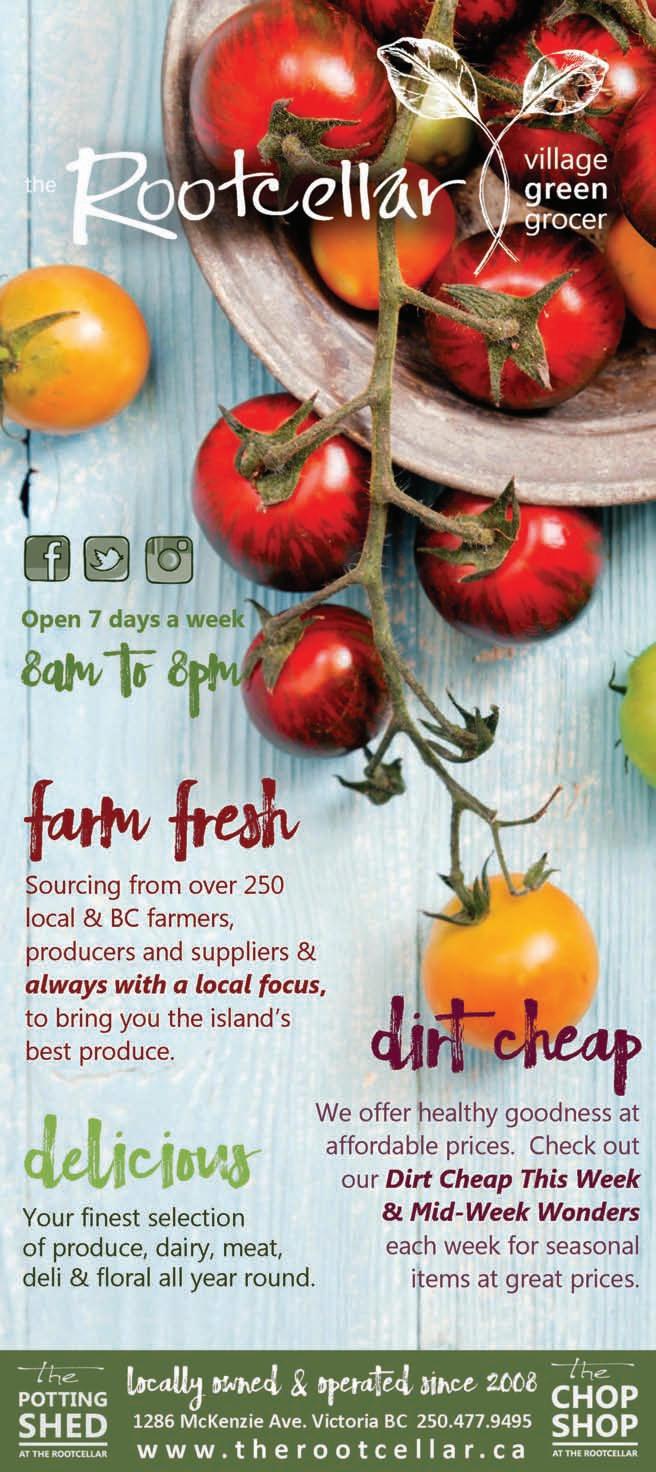
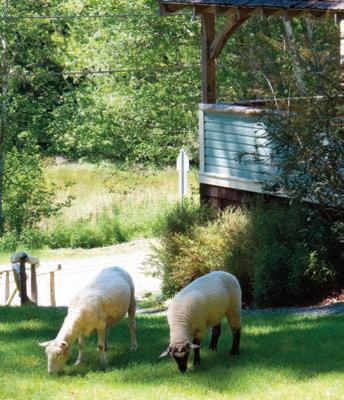




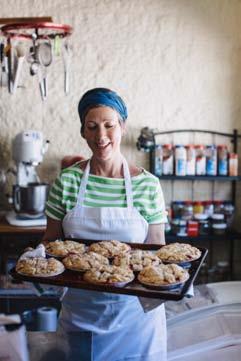


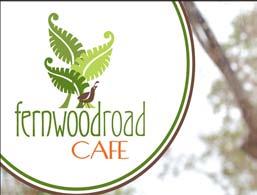













Once you’ve been “on island” you’ll never want to be “off island” again. From pristine beaches to breathtaking views, goat picnics to people picnics, farmer’s markets to farmer’s fields, spectacular views on the trails from Mount Maxwell to Ruckle Park, come prepared to sample everything. The food, the drink, the people, the views, the restaurants and the unique shopping. You may just want to call this beautiful island your next home.
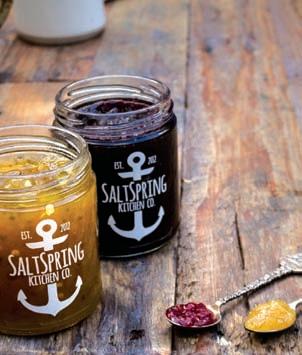
“How I wish that somewhere there existed an island for those who are wise and of good will.”—
Albert EinsteinPhoto by Wendy A Rosier, Salt Spring Island
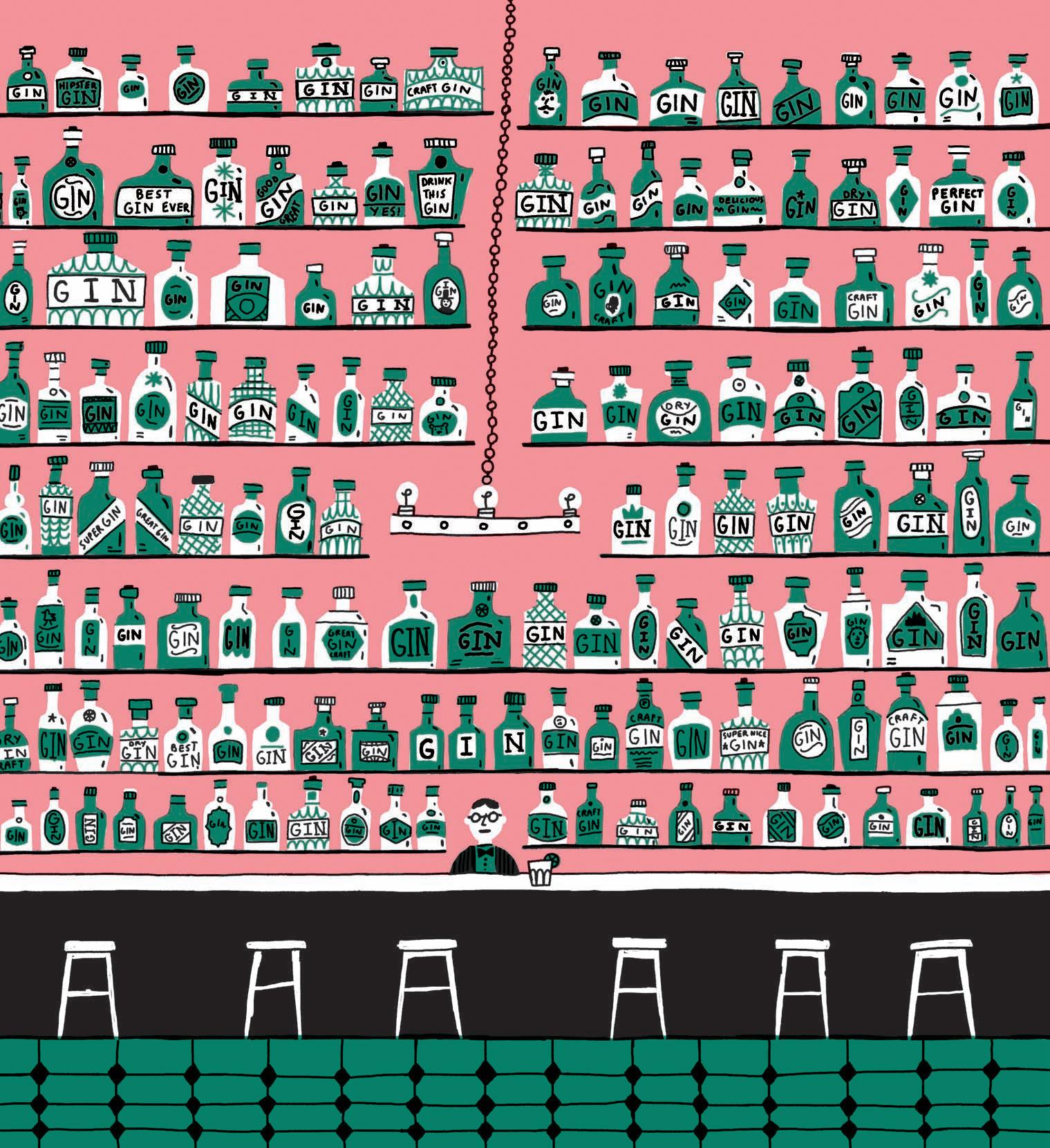










Illustration: Benoit Tardif, colagene.com






There are pub-come-gin palaces, hipster gin joints, gin bicycles, gin buses, even a gin train whose tour costs about the same as 10 bottles of very good gin. There’s also Portobello Road’s Ginstitute, museum and distillery.






Over in midtown, I am seated at the Gin Bar in the swish Holborn Dining Room. Floorto-ceiling glass shelves are devoted to more than 400 bottles of gin, which command a gin bible categorizing each style and suggesting a mix, including 27 kinds of tonic. Bartender Kristian Smith, Holborn’s “Juniper Master,” tastes and talks me through six very diverse gins that speak to the spirit’s explosion.
First up is a generous splash of Sipsmith London Dry. “I doubt the gin revival would exist if it weren’t for Sipsmith,” says Kristian. Founders Sam Galsworthy and Fairfax Hall, along with William Chase, who makes the U.K.’s only potato gin, were instrumental in getting an old edict revoked that outlawed small-batch distilling. These days, Sipsmith master distiller and drinks historian Jared Brown meticulously handcrafts Sipsmith gins in a 300-litre copper still named Prudence, along with her two younger siblings, Patience and Constance. I give the drop one good swirl and a deep prolonged sniff, as one does before taking a sip of good gin. It is silky almost oily on the palate with lots of lovely spice. I like my gin nearly naked, and Sipsmith London Dry makes an ideal bone-dry martini. Just as I’m about to give my second gin, the Audemus Pink Pepper gin, a whirl, Ian T. Spink sidles up to the bar. What luck! It so happens Ian T. Spink is Pink Pepper’s distiller. He’s able to spare me a few moments before his appointment with the bar manager.
“What do you think? Tell the truth. I’m from Essex. I have a thick skin,” Spink says with a grin. I take a whiff and a sip. It’s my second gin of the day, but the fifth that week—and thus far the most intriguing. Pink Pepper gin is made in a small vacuum still called a Rotavapor, which Spink baptized Brunhilde, at his home—in Cognac, France.
A lash of juniper, which, by law must be the dominant botanical for gin to be gin, soon fades away to citrus, honey, vanilla and the pink peppercorn, which lends a pronounced spice-and-floral aspect. Cinnamon and tonka beans, also part of the botanical mix, intensify spice and vanilla notes. Each botanical is macerated and distilled separately in neutral spirit before the final assemblage. Audemus Pink Pepper is an ode to London’s gin revolution, and Spink is among the pack of today’s distillers who play with botanicals outside as well as inside the traditional box (juniper, coriander, angelica, orris root, cassia bark, citrus peel). Most of these folk experiment with around nine botanicals—seldom in excess of twelve.

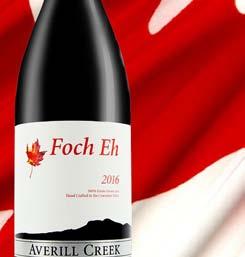







Unless you are Corey Mason. The master distiller “carefully selects” the 24 botanicals that go into his gold-medal Silent Pool gin. He’s rather like a chef who forages for ingredients for a signature dish. Thompson’s Bordelais grape-based gin, made by Simon Thompson, “an Englishman in Bordeaux,” includes peaches and caviar. The result is an intensely perfumed fruit-and-spice elixir. William Chase Distillery merges ginger into its potato gin. In 2016, the East India Company, noted more for tea than tipple, turned its attentions to launching a London Dry Gin. Is it the amchoor (unripe mango) powder that is responsible for that super-citrus tang? Beefeater 24 luxury gin adds Japanese Sencha and Chinese green tea.
With all these unique gins, it’s little wonder the gin and tonic has been redefined. The drink deserves more than “gin lurking at the bottom of warm tonic with a flaccid lemon sulking above,” Robert Joseph’s memorable description in his Wine, Beer, and Spirits (Carlton Books, 2000). To that end a “whacking great glass,” as one drinks writer terms the copa de balon (balloon glass), is now the receptacle for a G & T. Developed in Spain (the Spanish are famed for their love of “GinTonics”), the bulbous glass serves a threefold purpose: it traps the gin’s aromatics, ice melts very slowly thus preventing dilution of the drink, and it lends itself to fancy adornments, from spices to fruits to flowers, that echo the botanicals of the particular gin.
Punch Tavern in The City offers 60 gins, many of which are traditional London Dry gins. The barmaid pours three samples for me into copa de balons: Broker’s London Dry (which according to the website “does not follow the modern trend of using weird and wonderful spirits and botanicals”), Portobello Road 171 and Adnams Copper House Dry. Until Jonathan Adnams, CEO of Suffolk’s Adnams brewery, applied for a distillery license in 2010 (and got it), no one had refuted the arcane law dictating that a brewer could not be a distiller. I’m pleased he succeeded. Copper House Dry is juniper-charged. Five more botanicals, including hibiscus flower, are present but do not overtake. With Fever-Tree Indian tonic over ice in a copa with a slice of lime, Copper House Dry for me makes the perfect patio G & T.
Ian T. Spink’s skin is safe. I liked the Pink Peppercorn a bunch, but I think I prefer it, and the other modern style gins, neat and on ice. I have 391 more gins to try before I make up my mind.
PORTOBELLO ROAD GINSTITUTE theginstitute.com
HOLBORN DINING ROOM
holborndiningroom.com/gin-bar
SIPSMITH (AVAILABLE IN BC) sipsmith.com
PUNCH TAVERN
punchtavern.com
BROKER’S GIN (AVAILABLE IN BC) brokersgin.com
Vancouver Island Gins
AMPERSAND GIN
Made from organic B.C. wheat with eight organic and wild harvested botanicals and their own spring water. ampersanddistilling.com
DEVINE
Vin Gin
The base spirit is double-distilled from B.C. wine grapes, including Pinot Gris and Grüner Veltliner. A third distillation marries the spirit with a dozen organic and wildgathered botanicals.
New Tom Rich, amber, with a hint of fruity sweetness.
Genever
Original Dutch-style gin, crafted from locally grown and malted barley. With more than 20 rare, medicinal botanicals. devinevineyards.ca
FERMENTORIUM DISTILLING CO.
Stump Coastal Forest Gin
Hand-foraged herbs and unique botanicals grown in British Columbia. fermentorium.ca
MERRIDALE
Cowichan Gin
Made entirely from B.C. fruit and aged more than three years in stainless steel tanks to soften the finish. It features more than 20 wild and native botanicals foraged from the Cowichan Valley.
Copper Gin
More than 30 locally harvested and foraged botanicals are infused in the vapours through a slow and gentle distillation. The gin is barrel-aged in French oak. merridale.ca
SHERINGHAM DISTILLERY
Seaside Gin
Made from B.C. organic white wheat, B.C. malted barley, natural botanicals and sustainable, hand-harvested local winged kelp (Alaria marginata). sheringhamdistillery.com
VICTORIA DISTILLERS
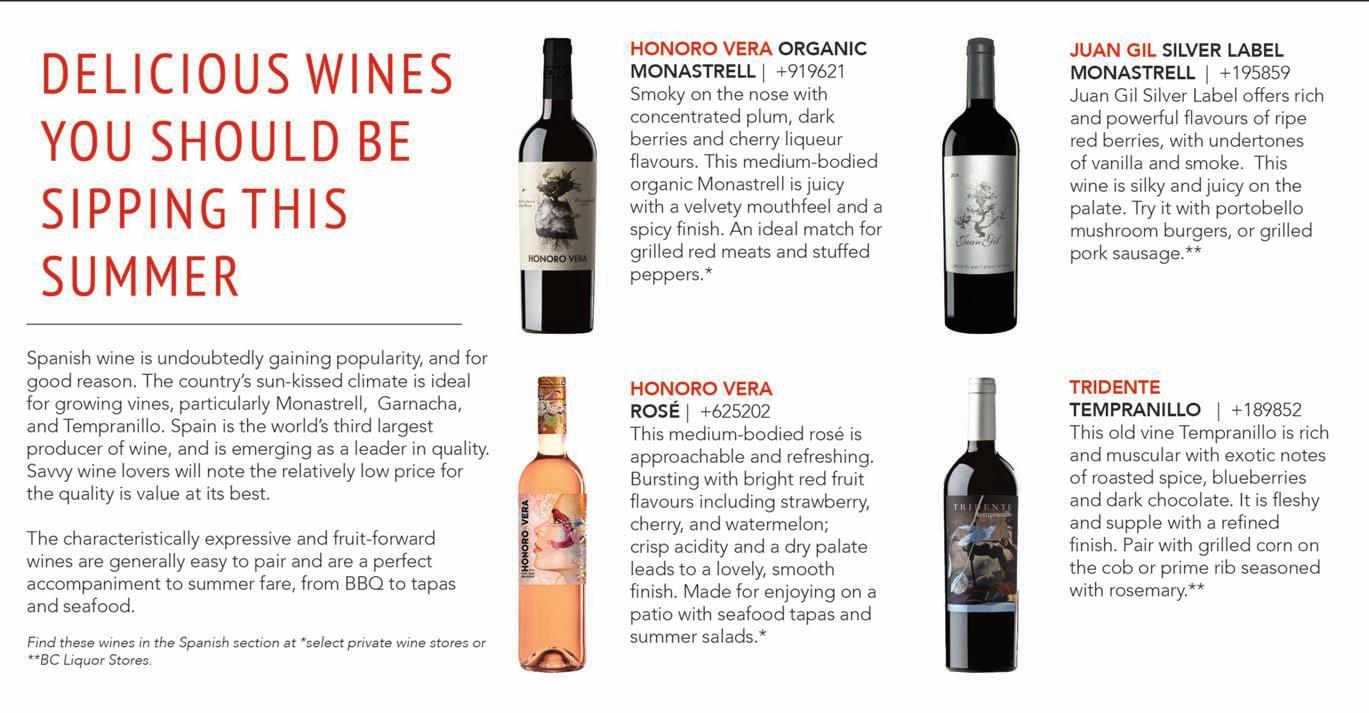
Victoria Gin
Balances the characteristic evergreen flavour of juniper with notes of citrus, floral and spice. An intensely flavoured spirit that is as full-bodied and as complex as a fine single-malt whisky.
Oaken Gin
Softened vanilla notes from the oak, a full and buttery caramel sweetness.
Empress Gin
More juniper than their Victoria Gin, with robust citrus notes from grapefruit peel. They also use rose, ginger, coriander, cinnamon and Fairmont Empress Blend Tea.
WAYWARD DISTILLATION HOUSE
Unruly Gin
Starts life as 100 percent pure B.C. honey gently fermented into mead. Balanced juniper with a hint of cedar and citrus, a dash of fragrant lavender and sarsaparilla root, and the vibrant notes of coriander. waywarddistillationhouse.com
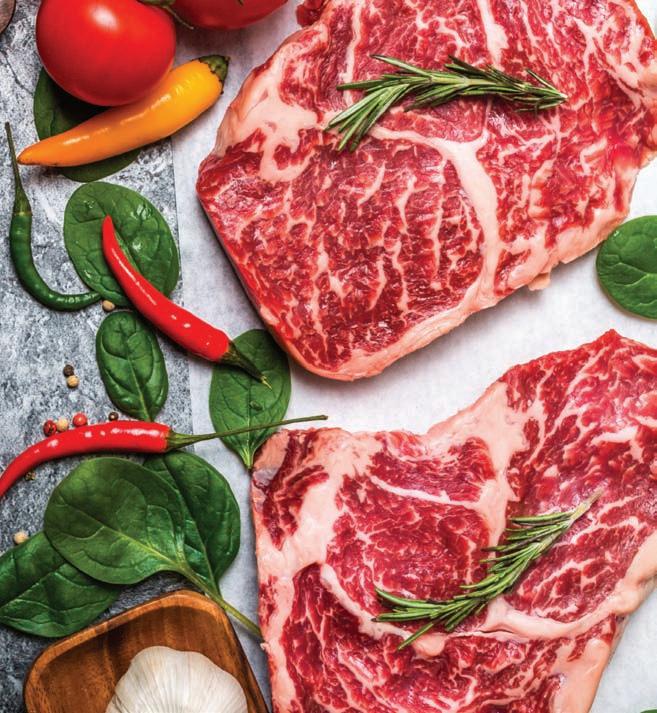







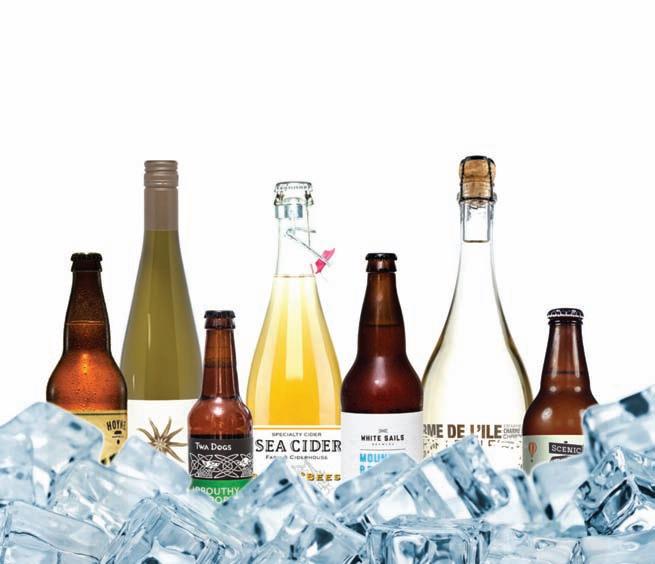




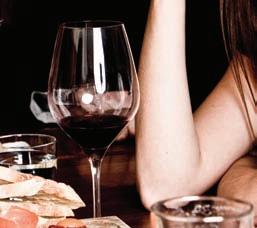


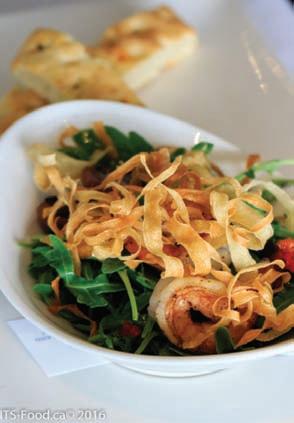
 story by DANIEL MURPHY photography by JOHANN VINCENT
story by DANIEL MURPHY photography by JOHANN VINCENT

MIKE SPENCE HAS NEVER BREWED BEER, or even worked for a brewery. But he has the Sickness. Through a decade and a half of long nights slinging suds, building his success upon the smelly dregs of pint glasses, he still holds an unmatched reverence for the art of craft brewing. The tourists in this suddenly-hip scene are so legion it’s like a horrible, bearded joke—making it more important than ever to recognize the heroes from the hangers-on, and pay homage where it’s due. But, like rare birds, you will have to seek them out. The true forefathers of the beer snifter are reluctant heroes. Before I can even sit down to initiate a dialogue, Mike asks if I’ve heard about a new plot by InBev (Budweiser’s parent company) to choke hop supply to independent breweries. He recounts a story about Lagunitas founder Tony Magee purposefully misspelling label information to stay consistent with the mistakes he made on his first print runs. He tells me—with as much ecstasy as his reserved, quiet nature can summon—that Scot Blair, bar owner/personal hero from San Diego, will be flying up to The Drake for an upcoming event. Make no mistake—Mike Spence lives, breathes and sweats the stuff. But only the best of the stuff.
In 1989 Mike made his way out West to Vancouver from Charlottetown, P.E.I. Soon after, he was waiting for the ferry in Horseshoe Bay, Nanaimo-bound. He entered a bar and ordered what he calls “the bad beer of my youth.” Beside him at the bar, the Prototypical Old-timer snarled at him, “You don’t want to drink that shit.” It turns out the “shit” he should have been drinking, in one portentous curmudgeon’s opinion, was Hermann’s Dark Lager (VI Brewery.) This wasn’t a clichéd epiphany—more of a clichéd seed planted firmly in a young traveller’s mind.

Thirteen years later, on February 2, 2002, the Knockanback Grill opened its doors, at Wilkinson and Interurban roads in Saanich, under the proprietorship of Mike and Lee Spence (Mike’s partner in marriage/business/crime.) Initially a stalwart outpost of Mike’s “bad beer” past, the Knockanback clientele began leaning toward a handful of the emerging local brews. Back in the day, this was not only a question of taste—local beer was expensive. And local brewers were not able to meet the “incentives” (legal or otherwise, mostly otherwise) that Big Beer was able to put on the table. This was a pivotal moment for the Spences. As a fledgling local pub, with everything on the line, moving away from the economic and generic safety of Big Beer was a bold and potentially
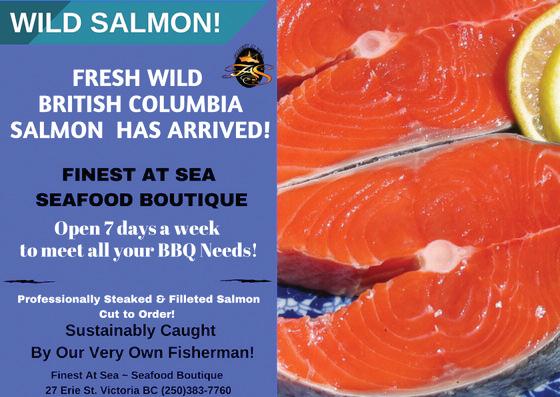
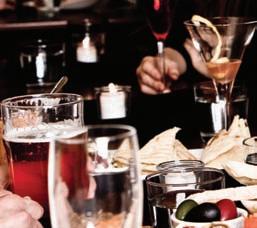




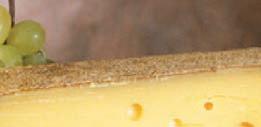
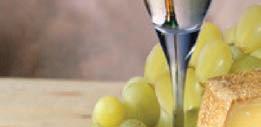









disastrous move. It’s difficult to understand the gravity of such a decision now. Ultimately, the budgetary shoestring that Mike was operating under became his guiding hand. He could relate to those cash-starved local breweries, and this tapped into an innate sense of responsibility to support them wherever possible.
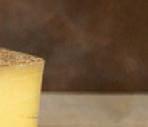
Spoiler: the shift in direction went quite well. The taps at Knockanback expanded from five to sixteen. The lineup grew overwhelmingly Island-oriented. The lonely, massproduced domestic lagers went stale in the lines. And when the idea of a second location seemingly fell into their laps, it was a no-brainer to pull the trigger. If you drive down Sooke Road, past the stalled and abandoned Colwood Corners development overgrown with Scotch broom and wilting rebar, you’ll see the remnants of that “golden opportunity.” Broken landlord promises and being, retrospectively, stretched too thin, led to their decision to step away from the industry entirely and take a self-imposed break to re-evaluate their direction.
When Mike describes his “happy place,” you can see him retreat there, mentally. Cannon Beach, Oregon. It’s his place to “clear your brain … find space … peace …” And though it’s by no means a beer destination, “you don’t have to be in Portland,” he says, “to get great beer down there [in the U.S.]” This was 2012, and although the momentum for craft beer here on the Island was reaching its current velocity, it was still such a different scene South of the Border: “Victoria, or Canada even, was still deep in the IPA phase, but even local restaurants [down the West Coast] had ambers, pilsners, stouts, sours … they were like wine and tapas bars, but with beer.” And Mike and Lee hadn’t even hit the Big Smoke yet …



That’s where they honed their inspiration. “Every city had some kind of version of this.” Mike waves his hands around the bar of The Drake. “Small, creative, fresh menu. No-hard bar. Little or no wine.” And yet Victoria did not. Having exposed their niche, the real work began: business plans, investors, venues, leasehold improvements on the Pandora location, etc. A year, and a metric ton of perseverance later, everything was coming together. And then, sitting around the house one afternoon, the stresses of the project fading and with a clean bill of health, Mike had a massive heart attack. Not that there’s ever “good timing” for a quadruple bypass, but in the closing months of a new venture, not ideal. Despite a superhuman recovery (February surgery, June assisting with construction), I suggest to him that this must have slowed the project. He motions toward Lee (busy as usual, sleeves up in the trenches) and trails off a sentence: “Lee was … wow …” And I can only imagine—nurse, support group, CEO, project manager. I asked Mike to describe their business relationship: “I’m the nutty ideas. Lee makes it work.”
And their latest nutty idea seems to have tapped a vein. The place is jammed far more often than not. Their “five-year-plan” has become a “two-years-in-and we-need-a-newplan” plan. What’s the secret formula? Mike laughs it off, humble as usual: “We wanted casual, comfortable. But it gets serious when you talk about the product.” So serious that the rooms are devoid of distraction – no TVs, no flashy décor. There’s definitely a living room atmosphere, if your living room poured the finest beers available on the Left Coast. Mike calls it “authenticity.” There’s been a noticeable “owner/operator energy” in all of his favourite beer haunts, which he has strived to replicate. And you can’t deny that he has succeeded, despite some initial customer pushback. The self-service at the bar, lack of hard liquor and limited wine options caused issues for some of Victoria’s more “culturally entrenched” and highly vocal customer base. I will leave you with Mike’s response, and my favourite of his many softly spoken, highly insightful, humbly presented quotes: “You go to a pizza joint for pizza. Not Chinese food.”







I’M THE NUTTY IDEAS. LEE MAKES IT WORK.
MOST OF MY COLUMNS HAVE BEEN ABOUT AN INGREDIENT, whether it’s the honey in a local honey liquor, a category of spirit or a specific mixer. And while all of these are pieces in the puzzle, it’s not the whole picture. Every work of art has a title, and naming a cocktail can be an adventurous endeavour. Let’s take an intrepid walk through the genius minds behind a few Victoria cocktails and examine the concepts that drive them.
Nate Caudle, formerly of Little Jumbo, is one of those bartenders who believes that naming a cocktail is as important as the ingredients and the drink itself. The process, which he calls “Trivial Pursuit in reverse” is often inspired by his life-long love of TV and video games. He tries to connect deep nostalgia and the guest’s inner geek to the name and description. “When you see them laugh at a reference, like an Easter egg I’ve hidden in the writing, and read it aloud to their friends at their table, it makes my day. Anytime I can bring out the nerd in people in a public setting where everyone is dressed fashionably, drinking fancy and acting cool, well, it makes me very happy.” His “Jigglypuff” cocktail, for example, is inspired by his love of Pokémon. (There's a Pokémon that is called a jigglypuff. Its power is to put people to sleep.)
Caudle also tries to carry a theme into every ingredient in the drink. His “Lullaby Bitters,” for example, features Valerian root and is accented with hibiscus, lemon balm, rose hips and mallow root (all natural sleep aids). At Victoria’s only dedicated sherry bar, Bodega, cocktail names are all about stories, feelings and emotions. Emily Henderson, general manager, explains how she and her team at Bodega name drinks.
The cocktail she used as an example was the Juan Burgundy. “The name came from a conversation about how the cocktail made us think of smoking a cigar in an old library in a mahogany leather chair,” says Henderson. “And that made me think of Ron Burgundy! But for some reason I said John Burgundy, which quickly inspired ‘Juan Burgundy.’ It was a combination of the initial association it conjured up, with us running away with a joke. Which worked!”
The Nomad whiskey in Bodega’s Juan Burgundy cocktail is a Highland Scotch that has been aged in Jerez Sherry casks (nothing new there), but in Spain not in Scotland. The drink really does make you feel as if you need to own a collection of very old books, a smoking jacket and a leather chair.
Bartenders are creative and inventive, but not only when mixing liquor and bitters together. When the layers of stories and inspiration meet, their collective creativity truly makes for a memorable drinking experience.

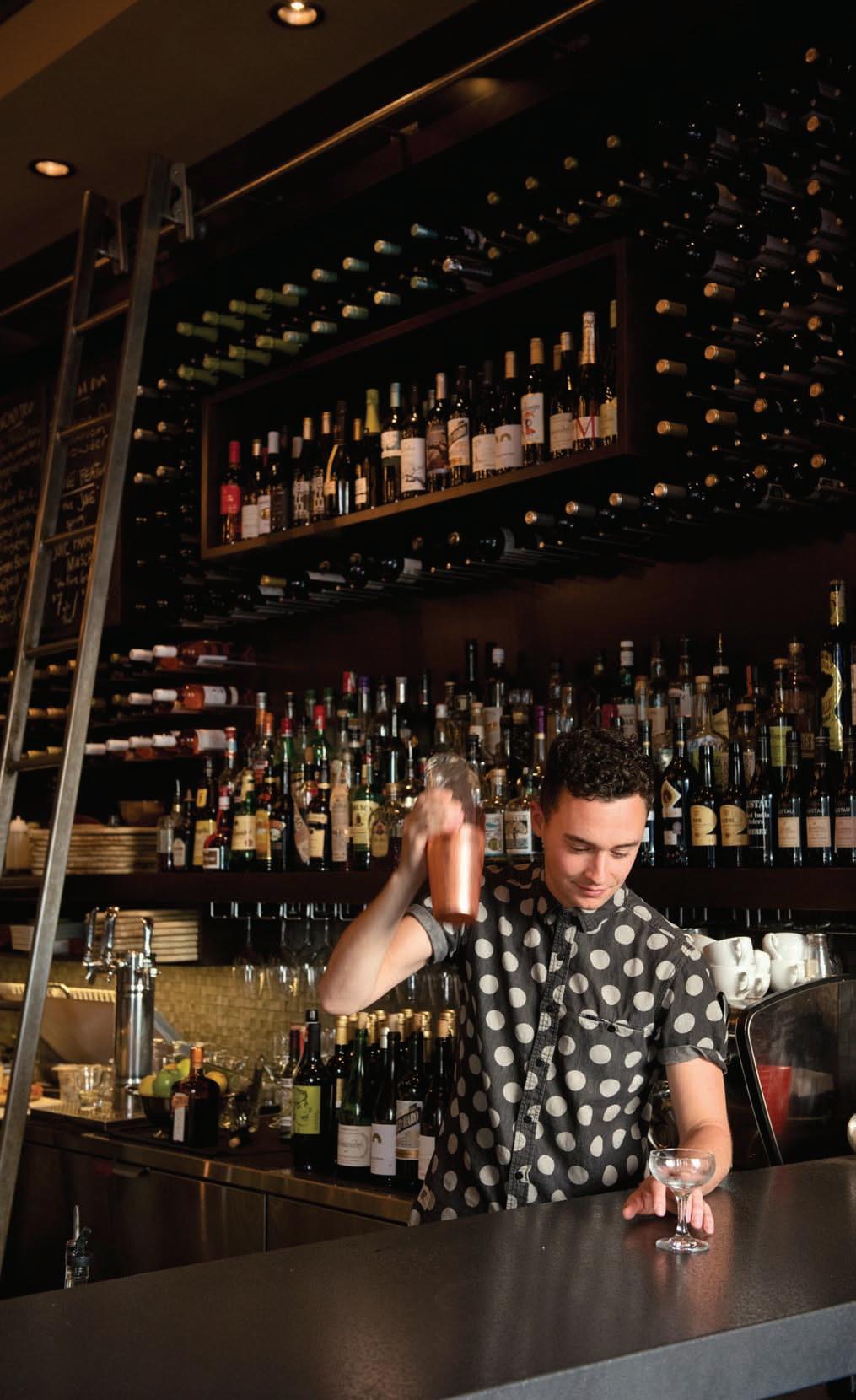
JUAN BURGUNDY
30 mL Nomad whiskey
15 mL Alvear medium dry sherry
15 mL Burrowing Owl “Coruja” port
15 mL simple syrup
10 mL lemon
• GLASS - Whisky glass or small coup
• BUILD - Muddle a sprig of rosemary gently, and then add the ingredients and the ice. Shake and double strain into a Bowmore Islay Whisky glass rinsed with whisky
• GARNISH - a small piece of leather clipped to the side of the glass for added aroma & looks.
Cocktail names are as much a part of the experience as the spirit and the mixer.
SPIER SIGNATURE CHENIN BLANC 2016 SOUTH AFRICA $13.50-16.00 $13.50-16
Established in 1712 in the heart of Stellenbosch, Spier is one of the oldest wineies in South Africa. The vineyards are now managed using Biodynamic techniques and the results are nothing short of miraculous. Very floral on the nose with lovely citrus and tropical fruit flavours and a rich core of zingy acidity. Textbook Chenin Blanc from the cape. whitehall.ca
CARMEN WAVE SERIES SAUVIGNON BLANC 2016 CHILE$12.00-14.00

Some wines are made to drink and enjoy, not to ponder and consider. This elegant little Sauvignon Blanc from the Leyda Valley is light and fresh with zesty lime and grapefruit aromas. Very lively with mouthwatering acidity and bright citrus fruit flavours. A charming little delight to quaff and forget at a price that will get you thinking. selectwines.ca
JOIE EN FAMILLE RESERVE RIESLING 2015 NARAMATA BENCH $25.00-27.00
Off dry and beautifully balanced with superb concentration, ripe citrus, apricot and ginger flavours and rapier like acidity. Took home “Double Gold” at the recent 2017 Cascadia Wine Competition. Top-notch! joiefarm.com
BERNARD DEFAIX CHABLIS 1ER CRU COTE DE LECHET 2015 FRANCE $35.0038.00
Bernard Defaix is the largest Domaine in the Cote De Lechet, owning 8 hectares of the 37 hectare premier Cru. It is also the site’s only certified organic grower. The 1er Crus of the Cote De Lechet are better know for their elegance than their power but this Chablis has it all. The nose is very provocative with subtle apple, citrus, saline and mineral aromas. Beautifully balanced with layers of ripe, fleshy fruit and a chalky minerality. liffard.com
PENTÂGE PINOT GRIS 2015 OKANAGAN VALLEY $20.00-22.00
Pentâge Winery sits on 35 acres of prime real estate overlooking Skaha Lake just outside of Penticton. Lush and expressive with ripe pear, honey and mineral flavours, good weight and a slightly oily texture. Nicely balanced with a long dry finish. pentage.com

THERAPY VINEYARDS PINK FREUD 2016 OKANAGAN $16.00-18.00
This immensely popular Okanagan rosé is a blend of Pinot Noir, Merlot and Pinot Meunier. Initially treated in the winery like a
red wine, the must is allowed a cold soak on the skins for two days then bled off into a stainless steel tank for primary fermentation. From here on in its treated like a white wine. Bright pink and very aromatic with concentrated cherry, plum and strawberry flavours. Off-dry with a long, juicy finish. therapyvineyards.com
I reviewed the 2006 vintage back in the summer of 2011 but the current release bears close scrutiny as well. Decanter Magazine, the wine bible of the British wine hoipoloi, recentely proclaimed Fatalone to be “one of the very top Puglian producers.” It all began with Filippo Petrera “Il Fatalone” which in the local jargon means “irresistible heartbreaker.” To maintain his mojo with the ladies, Don Filippo began each day with the crosswords and a half a litre of milk washed down with an equivalent amount of Primitivo. There were no complaints and he lived to the age of 98. Today, winemaker Pasquale Petrera runs the show with the same passion but a little more focus on the job. The vineyards are now certified organic and the winery has been certified 100% sustainable with a zero carbon footprint. This is a very interesting stuff and good for the planet as well. It is an approach we need to see more of if we want to continue to enjoy the occassional glass of wine and survive as a species. The wine you ask, is it any good? Well, as a matter of fact, the current vintage is very good. It is rich and concentrated with a big nose and a flavour profile that offers up much in the way of sweet, spicy fruit flavours that just go on and on. libertywineimports.com
BISCEGLIA TERRE DI VULCANO AGLIANICO DEL VULTURE 2013 ITALY $15.00-17.00
Aglianico del Vulture is one of the great red wines of southern Italy. Located in Basilicata, at the southern extreme of Italy, Azienda Agricola Bisceglia was founded in 2001. Based in the Lavello near the base of Mount Vulture, the state of the art winery is supplied by a 30 hectare vineyard planted on the region’s famous, dark volcanic soils. The 2013 Aglianico has pronounced aromas of blackberries, spice and earth. Medium to full-bodied with good weight, concentrated fruit flavours balanced with a firm tannic backbone. whitehall.ca
ESPORÃO PÉ TINTO 2015 PORTUGAL $12.50-14.50

This hearty blend is big and chewy with layers of fresh blackberry, strawberry and spice flavours held in check with a backbone of firm tannins. Another value priced Portuguese table wine made for everyday drinking enjoyment. seacove.com

Hudson’s On First
Award winning dining in a beautifully restored heritage home. Local ingredients, classic techniques and made from scratch cooking are a just few reasons to visit us in Duncan more often. Celebrate Bubbles & Brunch, Lunch and Dinner.

163 First St. Duncan, BC, 250-597-0066, hudsonsonfirst.ca
Duncan Garage Café & Bakery
Serving up healthy and delicious vegetarian food 7 days a week. Summer is here! Check out our organic smoothies and ice cream sandwiches.
Looking forward to serving you healthy and vibrant Duncan Garage Creations.
330 Duncan St., Downtown Duncan (across from the railway station), 250-748-6223

The Local General Store
Come visit our warm, old-world 21st century general store to find unique locally-made and fair trade gifts for all celebrations. A one-stop sustainable source of seasonal organic produce, as well as household goods, stationery, toys, body care, and refillable cleaning products.
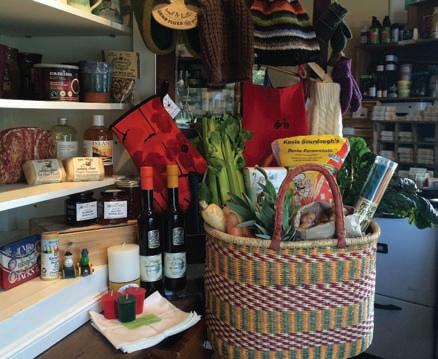
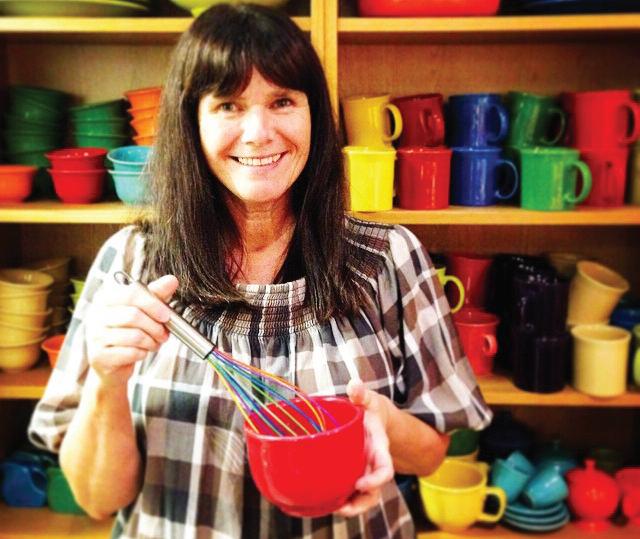
1440 Haultain St, (Corner of Haultain & Belmont) (778) 265-6225, thelocalgeneralstore.ca
Shopping locally keeps your community strong, unique and prosperous. When you choose a local business as opposed to a chain four times the money stays in your community and those businesses are 250% more likely to support local events, teams & charities. Much of Vancouver Island’s charm comes from its unique independent businesses and our goal is to help readers connect with those businesses.


Adrienne’s Restaurant & Tea Garden
Come visit our Bakery, Deli, Ice Cream Parlour, Restaurant and Tea Garden and celebrate our 60th anniversary! We’ll be doing a monthly draw for a gift bag valued at $60. We look forward seeing you at Adrienne's! To all our guests: “Thank you for your Patronage!”
Enjoy the sun on our outdoor patio this summer!
5325 Cordova Bay Road, Victoria, BC, 250-658-1535
AdriennesTeaGarden.com
Whisk
WHISK is a fully stocked kitchen and gift shop. We are located in the busy Victoria Public Market downtown. Gift and wedding registry available. Check us out on social media. At the Victoria Public Market, 778-433-9184, whiskvictoria.ca, Facebook and Instagram. Open 7 days a week
